Edie Melson's Blog, page 377
May 20, 2015
Social Media ABCs
by Edie Melson @EdieMelson
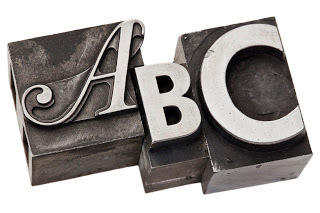 Social Media doesn’t have to be difficult. These tips can take you farther, faster if you implement them into your social networking strategy.
Social Media doesn’t have to be difficult. These tips can take you farther, faster if you implement them into your social networking strategy.
A is for Answer. Think about the questions your target audience has and use social media to give them the answers. For instance, my followers want to learn how to use social networking efficiently, so I Tweet short-cuts, tips and easy solutions that take up very little time.
B is for Basics. Whatever you’re doing, make it excellent. That means take time to check for typos and readability, in your Tweets, Facebook posts and in your blog. Also be sure you’re using giving accurate links. There’s nothing more frustrating than clicking on a link that takes you nowhere.
C is for Conversation. Remember social networking is all about interaction between people. It’s NOT talking at them...it’s talking with them.
 D is for Direction. Think about what you’re trying to accomplish and be deliberate.
D is for Direction. Think about what you’re trying to accomplish and be deliberate.
E is for Effort. Social Networking feels like it should be easy. But learning a new language is never done without expending effort.
F is for Friends and Followers. These are the basis of your social interaction online. Don’t neglect them and only chase new connections. Be true to this foundation and it will sustain you over the long haul.
G is for Google Alerts.Google alerts are one of your best social networking friends. You can set up alerts to let you know when someone has mentioned you or a subject you’re interested in. And best of all, it’s a free service. Just click Google Alerts and follow the instructions.
H is for Hashtags. These are the gems in the fields of Twitter. Learn to follow Hashtags and use them correctly to increase your cyber-reach. Here’s an article I wrote about How to find Relevant Hashtags.
I is for Include. Include others more often than yourself when you send out Tweets, Posts and Updates. The litany of Me, Me, Me gets old fast in social networking.
J is for Journey. Social networking is all about the journey and the joy of discovery. It’s NOT about arriving at a static destination.
K is for KISS. KISS is an old-fashioned acronym for Keep It Simple Stupid . When you try to use too many different social networking tools you can get overwhelmed. Stick to three or four that work and leave the dabbling to others who aren’t working to become writers.
 L is for Links. Used correctly, links or (hyperlinks)can increase your visibility and make your content much more valuable to those who follow you. Not sure how? Here’s another post I wrote on the basics of links.
L is for Links. Used correctly, links or (hyperlinks)can increase your visibility and make your content much more valuable to those who follow you. Not sure how? Here’s another post I wrote on the basics of links.
M is for Mobile. In the social networking world, more and more people view your blogs, tweets and Facebook through a mobile device (phone, tablet, even e-reader). Make certain you’re mobile friendly and all your sites are optimized for mobile viewing.
N is for Nice. Nice is the basic etiquette for social networking. My grandmother would have loved social media because the rules are simple—treat others the way you want to be treated.
O is for Original. Remember that original is who you are. There isn’t another person like you anywhere. That is the essence of your value, the way you see things, share things and interact is filtered through you. Don’t be a copycat, be yourself.
P is for Permission. Just because you see it online doesn’t mean it’s yours to borrow. Remember to respect the rights of others and take time to learn a little about copyrights. To get you started, here’s a copyright quiz that can test your knowledge.
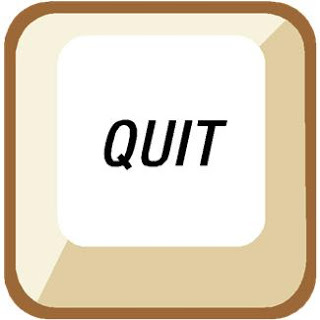 Q is for Quit. That’s right, quit. Set a time limit for social networking and then quit when it’s reached. You’re trying to be a writer, not a full-time marketing manager.
Q is for Quit. That’s right, quit. Set a time limit for social networking and then quit when it’s reached. You’re trying to be a writer, not a full-time marketing manager.
R is for Reach. Always look for new places to reach new people. Comment on a new blog or follow a friend of a friend.
S is for Start. Many people put off social networking because they think it’s hard or unpleasant. You’ll never know till you try (sorry, that’s my grandmother again).
T is for Tease. When you compose a Blog Title, Tweet or Facebook post, don’t sum up your message. Use copywriting techniques to write effective Headlines. Tease your audience with something compelling that will encourage them to look further or interact with you and each other. In other words, become a social networking flirt!
U is for Understand. Take time to understand the social networking world. Learn the etiquette involved before you run headlong into embarrassment. Here’s an article on Twitter FAQs to help you get started.
V is for Value. This is ALWAYS the basis of your message, no matter your social networking medium. Bring value to your followers and they’ll be friends for life.
W is for Wait. There are lots of people out there who are trying to sell you a shortcut to friends and followers. The problem is that audience is fickle. Take time to build your network through value and personal relationships and your numbers will mean something—to you and to potential publishers.
 X is for X-ray. Make certain the bones of your social networking strategy are strong. Take time to build a solid framework and you’ll spend less time and get more results.
X is for X-ray. Make certain the bones of your social networking strategy are strong. Take time to build a solid framework and you’ll spend less time and get more results.
Y is for YouTube. Videos are popular on Twitter, Facebook and in Blogs. Learn to leverage the use of videos to add value and fun to your relationships.
Z is for Zoo. Yes the whole social media thing is a bit of a zoo. I tell people truthfully, if you don’t feel like you’re behind in learning everything then you’re doing something right. It doesn’t matter who you are, NO ONE can know everything about social media, the field is just expanding too quickly.
Now it's your turn, what have you found most helpful with managing your social networking connections?
Don't forget to join the conversation!Blessings,Edie
TWEETABLES
Learn to connect online by mastering the basics - #SocialMedia ABCs - via @EdieMelson (Click to Tweet)
Social Media ABCs - it's not as difficult as you think! via @EdieMelson (Click to Tweet)
 Social Media doesn’t have to be difficult. These tips can take you farther, faster if you implement them into your social networking strategy.
Social Media doesn’t have to be difficult. These tips can take you farther, faster if you implement them into your social networking strategy.A is for Answer. Think about the questions your target audience has and use social media to give them the answers. For instance, my followers want to learn how to use social networking efficiently, so I Tweet short-cuts, tips and easy solutions that take up very little time.
B is for Basics. Whatever you’re doing, make it excellent. That means take time to check for typos and readability, in your Tweets, Facebook posts and in your blog. Also be sure you’re using giving accurate links. There’s nothing more frustrating than clicking on a link that takes you nowhere.
C is for Conversation. Remember social networking is all about interaction between people. It’s NOT talking at them...it’s talking with them.
 D is for Direction. Think about what you’re trying to accomplish and be deliberate.
D is for Direction. Think about what you’re trying to accomplish and be deliberate.E is for Effort. Social Networking feels like it should be easy. But learning a new language is never done without expending effort.
F is for Friends and Followers. These are the basis of your social interaction online. Don’t neglect them and only chase new connections. Be true to this foundation and it will sustain you over the long haul.
G is for Google Alerts.Google alerts are one of your best social networking friends. You can set up alerts to let you know when someone has mentioned you or a subject you’re interested in. And best of all, it’s a free service. Just click Google Alerts and follow the instructions.
H is for Hashtags. These are the gems in the fields of Twitter. Learn to follow Hashtags and use them correctly to increase your cyber-reach. Here’s an article I wrote about How to find Relevant Hashtags.
I is for Include. Include others more often than yourself when you send out Tweets, Posts and Updates. The litany of Me, Me, Me gets old fast in social networking.
J is for Journey. Social networking is all about the journey and the joy of discovery. It’s NOT about arriving at a static destination.
K is for KISS. KISS is an old-fashioned acronym for Keep It Simple Stupid . When you try to use too many different social networking tools you can get overwhelmed. Stick to three or four that work and leave the dabbling to others who aren’t working to become writers.
 L is for Links. Used correctly, links or (hyperlinks)can increase your visibility and make your content much more valuable to those who follow you. Not sure how? Here’s another post I wrote on the basics of links.
L is for Links. Used correctly, links or (hyperlinks)can increase your visibility and make your content much more valuable to those who follow you. Not sure how? Here’s another post I wrote on the basics of links. M is for Mobile. In the social networking world, more and more people view your blogs, tweets and Facebook through a mobile device (phone, tablet, even e-reader). Make certain you’re mobile friendly and all your sites are optimized for mobile viewing.
N is for Nice. Nice is the basic etiquette for social networking. My grandmother would have loved social media because the rules are simple—treat others the way you want to be treated.
O is for Original. Remember that original is who you are. There isn’t another person like you anywhere. That is the essence of your value, the way you see things, share things and interact is filtered through you. Don’t be a copycat, be yourself.
P is for Permission. Just because you see it online doesn’t mean it’s yours to borrow. Remember to respect the rights of others and take time to learn a little about copyrights. To get you started, here’s a copyright quiz that can test your knowledge.
 Q is for Quit. That’s right, quit. Set a time limit for social networking and then quit when it’s reached. You’re trying to be a writer, not a full-time marketing manager.
Q is for Quit. That’s right, quit. Set a time limit for social networking and then quit when it’s reached. You’re trying to be a writer, not a full-time marketing manager.R is for Reach. Always look for new places to reach new people. Comment on a new blog or follow a friend of a friend.
S is for Start. Many people put off social networking because they think it’s hard or unpleasant. You’ll never know till you try (sorry, that’s my grandmother again).
T is for Tease. When you compose a Blog Title, Tweet or Facebook post, don’t sum up your message. Use copywriting techniques to write effective Headlines. Tease your audience with something compelling that will encourage them to look further or interact with you and each other. In other words, become a social networking flirt!
U is for Understand. Take time to understand the social networking world. Learn the etiquette involved before you run headlong into embarrassment. Here’s an article on Twitter FAQs to help you get started.
V is for Value. This is ALWAYS the basis of your message, no matter your social networking medium. Bring value to your followers and they’ll be friends for life.
W is for Wait. There are lots of people out there who are trying to sell you a shortcut to friends and followers. The problem is that audience is fickle. Take time to build your network through value and personal relationships and your numbers will mean something—to you and to potential publishers.
 X is for X-ray. Make certain the bones of your social networking strategy are strong. Take time to build a solid framework and you’ll spend less time and get more results.
X is for X-ray. Make certain the bones of your social networking strategy are strong. Take time to build a solid framework and you’ll spend less time and get more results.Y is for YouTube. Videos are popular on Twitter, Facebook and in Blogs. Learn to leverage the use of videos to add value and fun to your relationships.
Z is for Zoo. Yes the whole social media thing is a bit of a zoo. I tell people truthfully, if you don’t feel like you’re behind in learning everything then you’re doing something right. It doesn’t matter who you are, NO ONE can know everything about social media, the field is just expanding too quickly.
Now it's your turn, what have you found most helpful with managing your social networking connections?
Don't forget to join the conversation!Blessings,Edie
TWEETABLES
Learn to connect online by mastering the basics - #SocialMedia ABCs - via @EdieMelson (Click to Tweet)
Social Media ABCs - it's not as difficult as you think! via @EdieMelson (Click to Tweet)
Published on May 20, 2015 03:38
May 19, 2015
15 Questions to Help Writers Launch Their Summer
by Lucinda Secrest McDowell @LucindaSMcDowell
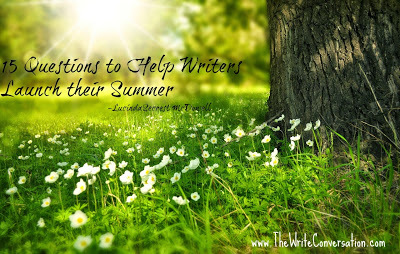 Summertime and the season for….. writers conferences, book conventions and intense writing sojourns! I have discovered that each time I return to an annual event, it is helpful to use it as an intentional time of evaluation and focus.
Summertime and the season for….. writers conferences, book conventions and intense writing sojourns! I have discovered that each time I return to an annual event, it is helpful to use it as an intentional time of evaluation and focus.
So, whatever your writing/speaking milestone is this summer (I will be returning to the Christian Bookseller’s Convention – ICRS and the Advanced Writers and Speakers Association - AWSA), may I encourage you to take some time and consider these questions?
Since I was last at this writers/speakers event
(or this time last summer)….What has been my most significant achievement?What new person did I meet who has begun to speak into my life?What mistake did I make and how can I prevent that for the future?What new technology have I incorporated into my life and work?Which colleagues (other writer/speakers) did I promote and encourage?What new blogs did I begin following and why will I keep them or move on?What prayer did God answer and how?What steps did I take to expand the reach of my ministry/writing/speaking?What words are emerging as themes for my life and writing/speaking?What books or lectures are still resonating in my heart and requiring a response?What has been my best received presentation, blog, book or seminar and why?How have I taken care of my soul and spiritual life?What is my current goal between now and this time next year?What is my most “impossible” prayer? To whom will I now write/phone a thank you or an encouraging word?
Even as we reflect on the past year, it is also important to remember that God gives us a “future and a hope” and we are encouraged to dream big and dare to live the vision God has placed in our hearts. I shall pray that each reader of this blog will experience a breakthrough this summer, perhaps even due to the examining of one of the above questions. If so, do let me know – cindy@encouragingwords.net
“Careful planning puts you ahead in the long run; hurry and scurry puts you further behind.” (Proverbs 21.5 MSG)
TWEETABLE
15 Questions to Help Writers Launch Their Summer - via @LucindaSMcDowell on @EdieMelson (Click to Tweet)
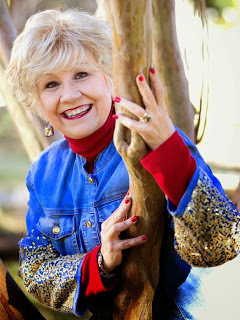 Lucinda Secrest McDowell, M.T.S., is the author of 11 books, contributing author to 25 books, and has published in more than 50 magazines. A graduate of Gordon-Conwell Theological Seminary and Furman University, she studied at the Wheaton Graduate School of Communication and served as Communications Specialist for the Lausanne Committee for World Evangelization (Thailand) and Editor for Billy Graham’s International Conference for Itinerant Evangelists (Netherlands). A member of Advanced Writers and Speakers Association (AWSA), she has received “Writer of the Year” awards from both Mt. Hermon and Blue Ridge Writers Conferences. Cindy speaks internationally through her ministry “Encouraging Words” and co-directs the New England Christian Writers Retreat. Known for her ability to convey deep truth in practical and winsome ways, she writes from “Sunnyside” cottage in New England. Visit her online at www.EncouragingWords.net
Lucinda Secrest McDowell, M.T.S., is the author of 11 books, contributing author to 25 books, and has published in more than 50 magazines. A graduate of Gordon-Conwell Theological Seminary and Furman University, she studied at the Wheaton Graduate School of Communication and served as Communications Specialist for the Lausanne Committee for World Evangelization (Thailand) and Editor for Billy Graham’s International Conference for Itinerant Evangelists (Netherlands). A member of Advanced Writers and Speakers Association (AWSA), she has received “Writer of the Year” awards from both Mt. Hermon and Blue Ridge Writers Conferences. Cindy speaks internationally through her ministry “Encouraging Words” and co-directs the New England Christian Writers Retreat. Known for her ability to convey deep truth in practical and winsome ways, she writes from “Sunnyside” cottage in New England. Visit her online at www.EncouragingWords.net
Links www.NewEnglandChristianWritersRetreat.com
Blog/website www.EncouragingWords.net
 Summertime and the season for….. writers conferences, book conventions and intense writing sojourns! I have discovered that each time I return to an annual event, it is helpful to use it as an intentional time of evaluation and focus.
Summertime and the season for….. writers conferences, book conventions and intense writing sojourns! I have discovered that each time I return to an annual event, it is helpful to use it as an intentional time of evaluation and focus. So, whatever your writing/speaking milestone is this summer (I will be returning to the Christian Bookseller’s Convention – ICRS and the Advanced Writers and Speakers Association - AWSA), may I encourage you to take some time and consider these questions?
Since I was last at this writers/speakers event
(or this time last summer)….What has been my most significant achievement?What new person did I meet who has begun to speak into my life?What mistake did I make and how can I prevent that for the future?What new technology have I incorporated into my life and work?Which colleagues (other writer/speakers) did I promote and encourage?What new blogs did I begin following and why will I keep them or move on?What prayer did God answer and how?What steps did I take to expand the reach of my ministry/writing/speaking?What words are emerging as themes for my life and writing/speaking?What books or lectures are still resonating in my heart and requiring a response?What has been my best received presentation, blog, book or seminar and why?How have I taken care of my soul and spiritual life?What is my current goal between now and this time next year?What is my most “impossible” prayer? To whom will I now write/phone a thank you or an encouraging word?
Even as we reflect on the past year, it is also important to remember that God gives us a “future and a hope” and we are encouraged to dream big and dare to live the vision God has placed in our hearts. I shall pray that each reader of this blog will experience a breakthrough this summer, perhaps even due to the examining of one of the above questions. If so, do let me know – cindy@encouragingwords.net
“Careful planning puts you ahead in the long run; hurry and scurry puts you further behind.” (Proverbs 21.5 MSG)
TWEETABLE
15 Questions to Help Writers Launch Their Summer - via @LucindaSMcDowell on @EdieMelson (Click to Tweet)
 Lucinda Secrest McDowell, M.T.S., is the author of 11 books, contributing author to 25 books, and has published in more than 50 magazines. A graduate of Gordon-Conwell Theological Seminary and Furman University, she studied at the Wheaton Graduate School of Communication and served as Communications Specialist for the Lausanne Committee for World Evangelization (Thailand) and Editor for Billy Graham’s International Conference for Itinerant Evangelists (Netherlands). A member of Advanced Writers and Speakers Association (AWSA), she has received “Writer of the Year” awards from both Mt. Hermon and Blue Ridge Writers Conferences. Cindy speaks internationally through her ministry “Encouraging Words” and co-directs the New England Christian Writers Retreat. Known for her ability to convey deep truth in practical and winsome ways, she writes from “Sunnyside” cottage in New England. Visit her online at www.EncouragingWords.net
Lucinda Secrest McDowell, M.T.S., is the author of 11 books, contributing author to 25 books, and has published in more than 50 magazines. A graduate of Gordon-Conwell Theological Seminary and Furman University, she studied at the Wheaton Graduate School of Communication and served as Communications Specialist for the Lausanne Committee for World Evangelization (Thailand) and Editor for Billy Graham’s International Conference for Itinerant Evangelists (Netherlands). A member of Advanced Writers and Speakers Association (AWSA), she has received “Writer of the Year” awards from both Mt. Hermon and Blue Ridge Writers Conferences. Cindy speaks internationally through her ministry “Encouraging Words” and co-directs the New England Christian Writers Retreat. Known for her ability to convey deep truth in practical and winsome ways, she writes from “Sunnyside” cottage in New England. Visit her online at www.EncouragingWords.net Links www.NewEnglandChristianWritersRetreat.com
Blog/website www.EncouragingWords.net
Published on May 19, 2015 01:00
May 18, 2015
Top Blogging Mistakes Made by Authors Online
by Edie Melson @EdieMelson
 Blogging is a great way to connect with our online audience. And while there are a lot more people out there doing it well, I still see some common mistakes. These things affect a blog, making readers click away before they finish a post and even unsubscribe altogether.
Blogging is a great way to connect with our online audience. And while there are a lot more people out there doing it well, I still see some common mistakes. These things affect a blog, making readers click away before they finish a post and even unsubscribe altogether.
Today I’m going to share the top blogging mistakes I see from authors.Blogging Mistakes Don't ignore your audience.Lack of Interaction. When someone takes the time and effort to comment on your blog post, it’s only polite to answer them. Sure there are days when we get busy and really can’t reply, but if you’re known for taking time to answer, those times will be forgiven. After all, look how patient you all are with me!Inconsistent Posting. I know I’ve said this at least one hundred times, but it bears repeating. If you expect readers to visit your blog consistently, they have the right to expect you to blog consistently.
Don't ignore your audience.Lack of Interaction. When someone takes the time and effort to comment on your blog post, it’s only polite to answer them. Sure there are days when we get busy and really can’t reply, but if you’re known for taking time to answer, those times will be forgiven. After all, look how patient you all are with me!Inconsistent Posting. I know I’ve said this at least one hundred times, but it bears repeating. If you expect readers to visit your blog consistently, they have the right to expect you to blog consistently.
 Don't be a weakling when it comes to blog titles.Weak Blog Post Titles. I know we’re not supposed to judge a book by its cover—or its title. But we all do it. Without compelling titles, blog posts go unread and readers unsubscribe.Little or No Formatting. Reading online takes more effort than reading actual ink on paper. Bloggers can overcome that with proper formatting. This includes using a sans-serif font, block formatting, bullet points, and bold subheadings. All these make the page easier to read.Too Many Grammatical Errors. I know, I really shouldn’t be the one throwing stones here. You all know I’ve allowed misspelled words, omitted words and grammatical errors into my posts. But I’m referring to numerous errors in almost every single post.
Don't be a weakling when it comes to blog titles.Weak Blog Post Titles. I know we’re not supposed to judge a book by its cover—or its title. But we all do it. Without compelling titles, blog posts go unread and readers unsubscribe.Little or No Formatting. Reading online takes more effort than reading actual ink on paper. Bloggers can overcome that with proper formatting. This includes using a sans-serif font, block formatting, bullet points, and bold subheadings. All these make the page easier to read.Too Many Grammatical Errors. I know, I really shouldn’t be the one throwing stones here. You all know I’ve allowed misspelled words, omitted words and grammatical errors into my posts. But I’m referring to numerous errors in almost every single post.
 Lack of Focus. Variation isn’t bad, but don’t go overboard. A blog without a focus is a blog without an audience.Posts that are too Long. People today are way more willing to spend time rather than money. Regularly posting things that are more than 500 - 600 words long will cost you readers.No Images with Blog Posts. Just like the formatting issue, images help break up the text and provide for easier reading. They also give visual clues to the content.
Lack of Focus. Variation isn’t bad, but don’t go overboard. A blog without a focus is a blog without an audience.Posts that are too Long. People today are way more willing to spend time rather than money. Regularly posting things that are more than 500 - 600 words long will cost you readers.No Images with Blog Posts. Just like the formatting issue, images help break up the text and provide for easier reading. They also give visual clues to the content.
These are the main mistakes I see consistently. But I'd love to know what you see that bugs you the most. Be sure to leave your thoughts in the comments section below.
Don't forget to join the conversation!
Blessings,
Edie
TweetablesAre you guilty of the top #blogging mistakes made by authors online? @EdieMelson shares what to avoid (Click to Tweet)
Top #blogging mistakes made by authors online - via #socialmedia expert @EdieMelson (Click to Tweet)
 Blogging is a great way to connect with our online audience. And while there are a lot more people out there doing it well, I still see some common mistakes. These things affect a blog, making readers click away before they finish a post and even unsubscribe altogether.
Blogging is a great way to connect with our online audience. And while there are a lot more people out there doing it well, I still see some common mistakes. These things affect a blog, making readers click away before they finish a post and even unsubscribe altogether. Today I’m going to share the top blogging mistakes I see from authors.Blogging Mistakes
 Don't ignore your audience.Lack of Interaction. When someone takes the time and effort to comment on your blog post, it’s only polite to answer them. Sure there are days when we get busy and really can’t reply, but if you’re known for taking time to answer, those times will be forgiven. After all, look how patient you all are with me!Inconsistent Posting. I know I’ve said this at least one hundred times, but it bears repeating. If you expect readers to visit your blog consistently, they have the right to expect you to blog consistently.
Don't ignore your audience.Lack of Interaction. When someone takes the time and effort to comment on your blog post, it’s only polite to answer them. Sure there are days when we get busy and really can’t reply, but if you’re known for taking time to answer, those times will be forgiven. After all, look how patient you all are with me!Inconsistent Posting. I know I’ve said this at least one hundred times, but it bears repeating. If you expect readers to visit your blog consistently, they have the right to expect you to blog consistently.
 Don't be a weakling when it comes to blog titles.Weak Blog Post Titles. I know we’re not supposed to judge a book by its cover—or its title. But we all do it. Without compelling titles, blog posts go unread and readers unsubscribe.Little or No Formatting. Reading online takes more effort than reading actual ink on paper. Bloggers can overcome that with proper formatting. This includes using a sans-serif font, block formatting, bullet points, and bold subheadings. All these make the page easier to read.Too Many Grammatical Errors. I know, I really shouldn’t be the one throwing stones here. You all know I’ve allowed misspelled words, omitted words and grammatical errors into my posts. But I’m referring to numerous errors in almost every single post.
Don't be a weakling when it comes to blog titles.Weak Blog Post Titles. I know we’re not supposed to judge a book by its cover—or its title. But we all do it. Without compelling titles, blog posts go unread and readers unsubscribe.Little or No Formatting. Reading online takes more effort than reading actual ink on paper. Bloggers can overcome that with proper formatting. This includes using a sans-serif font, block formatting, bullet points, and bold subheadings. All these make the page easier to read.Too Many Grammatical Errors. I know, I really shouldn’t be the one throwing stones here. You all know I’ve allowed misspelled words, omitted words and grammatical errors into my posts. But I’m referring to numerous errors in almost every single post.
 Lack of Focus. Variation isn’t bad, but don’t go overboard. A blog without a focus is a blog without an audience.Posts that are too Long. People today are way more willing to spend time rather than money. Regularly posting things that are more than 500 - 600 words long will cost you readers.No Images with Blog Posts. Just like the formatting issue, images help break up the text and provide for easier reading. They also give visual clues to the content.
Lack of Focus. Variation isn’t bad, but don’t go overboard. A blog without a focus is a blog without an audience.Posts that are too Long. People today are way more willing to spend time rather than money. Regularly posting things that are more than 500 - 600 words long will cost you readers.No Images with Blog Posts. Just like the formatting issue, images help break up the text and provide for easier reading. They also give visual clues to the content.These are the main mistakes I see consistently. But I'd love to know what you see that bugs you the most. Be sure to leave your thoughts in the comments section below.
Don't forget to join the conversation!
Blessings,
Edie
TweetablesAre you guilty of the top #blogging mistakes made by authors online? @EdieMelson shares what to avoid (Click to Tweet)
Top #blogging mistakes made by authors online - via #socialmedia expert @EdieMelson (Click to Tweet)
Published on May 18, 2015 01:00
May 16, 2015
Let Your Words be Worth More Than Silence
Oh the power of words—to hurt, to heal, to help.
When have the words of someone else helped you?
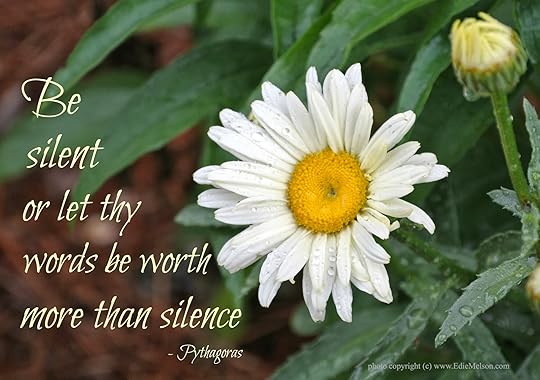 "Be silent or let thy words be worth more than silence." -PythagorasShare your thoughts in the comment section below.
"Be silent or let thy words be worth more than silence." -PythagorasShare your thoughts in the comment section below.
I also invite you to use this image any way you like online. Post it to your blog, share it on Facebook, Twitter, Pinterest, anywhere you'd like. All I ask is that you keep it intact, with my website watermark visible.
Don't forget to join the conversation!Blessings,Edie
When have the words of someone else helped you?
 "Be silent or let thy words be worth more than silence." -PythagorasShare your thoughts in the comment section below.
"Be silent or let thy words be worth more than silence." -PythagorasShare your thoughts in the comment section below. I also invite you to use this image any way you like online. Post it to your blog, share it on Facebook, Twitter, Pinterest, anywhere you'd like. All I ask is that you keep it intact, with my website watermark visible.
Don't forget to join the conversation!Blessings,Edie
Published on May 16, 2015 05:07
May 15, 2015
Build powerful TURNING POINTS in a novel (An Equation!)
Edie here: I'm super excited to have my dear friend and writing-coach-extraordinaire, Susan May Warren guest posting today. I begged her to come for two reasons: 1. because she always has such incredible information to share about novel writing and 2. because she has a new novella collection available for preorder and I wanted to help spread the word. So be sure and take a look at the offer for Somewhere, My Love at the end of the post!
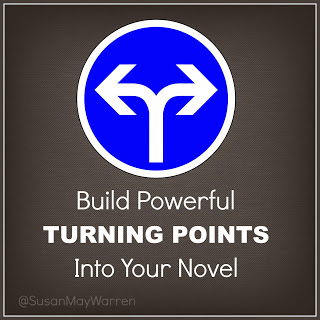 Build powerful TURNING POINTS in a novel (An Equation!)
Build powerful TURNING POINTS in a novel (An Equation!)
by Susan May Warren @SusanMayWarren
For most authors, setting up the right Act 1 feels natural—you introduce a character, give him a problem, invite him on a journey and then . . .All the fun starts. But what do you DO during the party? You can’t simply throw up obstacles, because obstacles do not create tension. Great tension is created by a sympathetic character who wants something for a good reason, who has something to lose, so they create a goal which is then met with a realistic and overwhelming obstacle.
It’s the push against this obstacle that causes tension.
More, it’s the AFTERMATH of confronting that obstacle that causes that character change. And that, after all, is the goal of your story—to create a powerful character change.
But what kind of obstacles are worthy of your story?
The best obstacles are external devices that cause an internal dilemma. And it’s this combination of Obstacles + Internal Dilemma that are the TURNING POINTS in your novel.
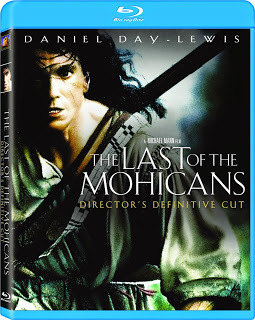 I got sucked into Last of the Mohicans last night (can it truly be that that film is 22 years old?). Great character change, great external obstacles leading to internal change.
I got sucked into Last of the Mohicans last night (can it truly be that that film is 22 years old?). Great character change, great external obstacles leading to internal change.
Meet Hawkeye. He’s a white man adopted into the Mohican tribe, wanting nothing to do with the war, or the military, or rules, for that matter. His external goal—to have a family (he is unmarried), but also to stay a free indian warrior. His values are loyalty (to his family) and freedom. (remember this.) However, Hawkeye’s big flaw is that he doesn’t want to get involved, he wants nothing to rule him.
Hawkeye and his party (his father and brother) happen upon a British garrison who have been attacked by a Huron war party. Hawkeye helps save the women, and agrees to help them get to Fort William Henry.
This decision is bolstered by the presence of Cora, the pretty daughter of Colonel Munroe. Cora is different than the other “white” women—she seems to understand Hawkeye and he begins to fall for her.Enter the Turning Points.
A great Turning Point contains the combination of an External Obstacle that leads to an Internal Confrontation (usually the battle between two values) and results in a Change of Character.
Let’s take those Turning Points apart.
First, start with the External Obstacle. A great ExO always stands in the way of the External Goal. Hawkeye’s short term goal is to get Cora and her sister to Fort William Henry (and back to their father.)
His long term External Goal is to keep Cora alive.
The result of confronting the External Goal is the effect it has on Hawkeye’s values—Freedom and Loyalty. With each step, he gains one and loses another.
Let’s take a look.
 The first Turning Point (after the Inciting Incident) occurs when they come across the destroyed homestead of a friend. Hawkeye knows that a war party has committed the violence, and refuses to bury the bodies, lest they return and discover Hawkeye’s trail. His goal—keep Cora alive by hiding their presence. The obstacle—she wants to bury the dead. The conflict—she doesn’t trust him. He wants to keep his word to her that he’ll get her to the Fort safely, so he tells her a story about himself (in MBT—My Book Therapy—we’d call that the Dark Moment Story—note that it happens in Act 2A!) which makes her respond in a way that strengthens the bond between them.
The first Turning Point (after the Inciting Incident) occurs when they come across the destroyed homestead of a friend. Hawkeye knows that a war party has committed the violence, and refuses to bury the bodies, lest they return and discover Hawkeye’s trail. His goal—keep Cora alive by hiding their presence. The obstacle—she wants to bury the dead. The conflict—she doesn’t trust him. He wants to keep his word to her that he’ll get her to the Fort safely, so he tells her a story about himself (in MBT—My Book Therapy—we’d call that the Dark Moment Story—note that it happens in Act 2A!) which makes her respond in a way that strengthens the bond between them.
However, with this step, he’s compromised, just a little, his freedom. He’s starting to get involved.
External Obstaclecauses Internal Confrontation, which leads to a Change of Character.
 The second Turning Point happens when they reach the fort. There, the Colonel is informed of the attacks on the homesteaders—many of whom are the wives and children of his militia. He refuses to let them leave to protect them, so Hawkeye engineers their escape from the fort. . . an act of sedition. However, instead of leaving with them, he decides to stay.
The second Turning Point happens when they reach the fort. There, the Colonel is informed of the attacks on the homesteaders—many of whom are the wives and children of his militia. He refuses to let them leave to protect them, so Hawkeye engineers their escape from the fort. . . an act of sedition. However, instead of leaving with them, he decides to stay.
Why? Because:Jack Winthrop: You’re not coming with us?Hawkeye: I’ve got a reason to stay. Jack Winthrop: That reason wear a striped skirt and work in the surgery? Hawkeye: It does. No offense, but it’s a better looking reason than you, Jack Winthrop.
More, the FRENCH are digging in and are going to overrun the fort, and he knows it.
Let’s return to our equation:Goal—To keep Cora Alive. External Obstacle—His crime of sedition and the need to escape before he’s discovered. Internal Confrontation—freedom versus loyalty. He again chooses loyalty (which is morphing into love) and that choice puts him in Cora’s arms. . . and then in prison.
Note how while the obstacles increase in danger, it’s the effect of the decision as a result of the obstacles that worsens Hawkeye’s situation. Authors often confuse making the obstacle worse when actually the worsening OUTCOME, or the EFFECT of the obstacle is the goal.
 The Final Turning Point happens when, after the fort falls and the British surrender, the escaping troops are ambushed by the Huron and Hawkeye and Cora (and friends) flee their attackers. They find themselves trapped in a waterfall and Hawkeye must face his final External Obstacle—stay, and fight to the death and lose his chance to keep Cora alive. Or flee, and hope that he can rescue her. Remember, those External Obstacles always block the character from his main goal. (Keep Cora Alive!) He then has an Internal Confrontation, choosing between loyalty and freedom, again. This time, although it looks like he’s choosing freedom, he’s actually choosing to rescue her.
The Final Turning Point happens when, after the fort falls and the British surrender, the escaping troops are ambushed by the Huron and Hawkeye and Cora (and friends) flee their attackers. They find themselves trapped in a waterfall and Hawkeye must face his final External Obstacle—stay, and fight to the death and lose his chance to keep Cora alive. Or flee, and hope that he can rescue her. Remember, those External Obstacles always block the character from his main goal. (Keep Cora Alive!) He then has an Internal Confrontation, choosing between loyalty and freedom, again. This time, although it looks like he’s choosing freedom, he’s actually choosing to rescue her.
Cora Munro: You’ve done everything you can do. Save yourself. If the worst happens, and only one of us survives, something of the other does too.
Hawkeye: No. You stay alive. If they don’t kill you, they’ll take you north, up to Huron land. Submit, do you hear? You’re strong, you survive. You stay alive, no matter what occurs! I will find you. No matter how long it takes, no matter how far, I will find you! (Most romantic dialogue in history. Next to – “it wasn’t over! It still isn’t over!”)
He is choosing to save her by escaping—and then racing to free her. But the character change here is that he binds himself to the task of rescuing her. He’s no longer free and is now completely involved in this war, in saving her. He’s gone from uninvolved hunter, answering to no one, to warrior, answering to the call of his heart.
The Black Moment, of course, is up next, when he tries to trade himself for the woman he loves, sacrificing his freedom, and life for love.
How do you make your Act 2 compelling? In MBT, we rely on a book by Brandilyn Collins, Getting into Character, where she talks about the D’s—building your story around creating a series of increasing disappointments—Disaster, Destruction, Devastation. We affectionately call them the D’s. But you can simplify—Bad, Badder, Baddest. Or whatever you want to call them—just make sure that each Turning Point contains the following:
An External Obstacle that is set against the main Goal (Keep Cora Alive),+which causes an Internal Confrontation (between values),+and results in a Character Change (even if it is a small step).
Not every obstacle is a turning point. Not every value choice is a character change. But the lethal combination of the External Obstacles combined with the Internal Confrontation can make even the most hard-hearted, leather-clad, long-hair warriors (with incredible brown eyes) sacrifice themselves for the sake of love.
Edie again: if you want to see how this all works together, order Susan's new novella collection, Somewhere, My Love. Beyond the fact that it's only 99 cents—You'll be drawn into the story, but you'll also see examples of exactly what Susan shared in the post above.
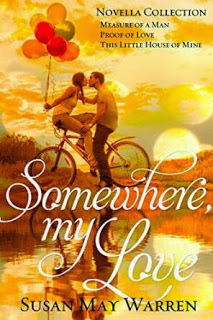 Somewhere, My Love
by Susan May Warren
Somewhere, My Love
by Susan May Warren
We’d all like to believe that there is someone out there, waiting for us. The perfect one, who is exactly the right fit. But sometimes the wait – and the fear of launching out to find that special someone -- keep us from leaping out in faith. From saying hello, accepting that cup of coffee, saying yes to a romantic walk on the beach.
Sometimes it just takes a providential moment to change everything. RITA and Christy award-winning, ECPA and CPA best-selling novelist, Susan May Warren brings you three delightful novellas about leaping out into the unknown only to discover that yes, somewhere, my love is waiting.
TWEETABLESBuild powerful turning points in a novel - an equation from @SusanMayWarren & a special offer (Click to Tweet)
Learn the secrets of building powerful turning points into your novel from @SusanMayWarren (Click to Tweet)
 Susan May Warren is the RITA award-winning novelist of over thirty novels. A five-time Christy award finalist, a two-time RITA Finalist, she’s also a multi-winner of the Inspirational Readers Choice award, and the ACFW Carol Award.A seasoned women’s events speaker, she’s a popular writing teacher at conferences around the nation and the author of the beginning writer’s workbook: From the Inside-Out: discover, create and publish the novel in you!. She is also the founder of www.MyBookTherapy.com, a story-crafting service that helps authors discover their voice. You can find her online at www.susanmaywarren.com.
Susan May Warren is the RITA award-winning novelist of over thirty novels. A five-time Christy award finalist, a two-time RITA Finalist, she’s also a multi-winner of the Inspirational Readers Choice award, and the ACFW Carol Award.A seasoned women’s events speaker, she’s a popular writing teacher at conferences around the nation and the author of the beginning writer’s workbook: From the Inside-Out: discover, create and publish the novel in you!. She is also the founder of www.MyBookTherapy.com, a story-crafting service that helps authors discover their voice. You can find her online at www.susanmaywarren.com.
 Build powerful TURNING POINTS in a novel (An Equation!)
Build powerful TURNING POINTS in a novel (An Equation!)by Susan May Warren @SusanMayWarren
For most authors, setting up the right Act 1 feels natural—you introduce a character, give him a problem, invite him on a journey and then . . .All the fun starts. But what do you DO during the party? You can’t simply throw up obstacles, because obstacles do not create tension. Great tension is created by a sympathetic character who wants something for a good reason, who has something to lose, so they create a goal which is then met with a realistic and overwhelming obstacle.
It’s the push against this obstacle that causes tension.
More, it’s the AFTERMATH of confronting that obstacle that causes that character change. And that, after all, is the goal of your story—to create a powerful character change.
But what kind of obstacles are worthy of your story?
The best obstacles are external devices that cause an internal dilemma. And it’s this combination of Obstacles + Internal Dilemma that are the TURNING POINTS in your novel.
 I got sucked into Last of the Mohicans last night (can it truly be that that film is 22 years old?). Great character change, great external obstacles leading to internal change.
I got sucked into Last of the Mohicans last night (can it truly be that that film is 22 years old?). Great character change, great external obstacles leading to internal change.Meet Hawkeye. He’s a white man adopted into the Mohican tribe, wanting nothing to do with the war, or the military, or rules, for that matter. His external goal—to have a family (he is unmarried), but also to stay a free indian warrior. His values are loyalty (to his family) and freedom. (remember this.) However, Hawkeye’s big flaw is that he doesn’t want to get involved, he wants nothing to rule him.
Hawkeye and his party (his father and brother) happen upon a British garrison who have been attacked by a Huron war party. Hawkeye helps save the women, and agrees to help them get to Fort William Henry.
This decision is bolstered by the presence of Cora, the pretty daughter of Colonel Munroe. Cora is different than the other “white” women—she seems to understand Hawkeye and he begins to fall for her.Enter the Turning Points.
A great Turning Point contains the combination of an External Obstacle that leads to an Internal Confrontation (usually the battle between two values) and results in a Change of Character.
Let’s take those Turning Points apart.
First, start with the External Obstacle. A great ExO always stands in the way of the External Goal. Hawkeye’s short term goal is to get Cora and her sister to Fort William Henry (and back to their father.)
His long term External Goal is to keep Cora alive.
The result of confronting the External Goal is the effect it has on Hawkeye’s values—Freedom and Loyalty. With each step, he gains one and loses another.
Let’s take a look.
 The first Turning Point (after the Inciting Incident) occurs when they come across the destroyed homestead of a friend. Hawkeye knows that a war party has committed the violence, and refuses to bury the bodies, lest they return and discover Hawkeye’s trail. His goal—keep Cora alive by hiding their presence. The obstacle—she wants to bury the dead. The conflict—she doesn’t trust him. He wants to keep his word to her that he’ll get her to the Fort safely, so he tells her a story about himself (in MBT—My Book Therapy—we’d call that the Dark Moment Story—note that it happens in Act 2A!) which makes her respond in a way that strengthens the bond between them.
The first Turning Point (after the Inciting Incident) occurs when they come across the destroyed homestead of a friend. Hawkeye knows that a war party has committed the violence, and refuses to bury the bodies, lest they return and discover Hawkeye’s trail. His goal—keep Cora alive by hiding their presence. The obstacle—she wants to bury the dead. The conflict—she doesn’t trust him. He wants to keep his word to her that he’ll get her to the Fort safely, so he tells her a story about himself (in MBT—My Book Therapy—we’d call that the Dark Moment Story—note that it happens in Act 2A!) which makes her respond in a way that strengthens the bond between them.However, with this step, he’s compromised, just a little, his freedom. He’s starting to get involved.
External Obstaclecauses Internal Confrontation, which leads to a Change of Character.
 The second Turning Point happens when they reach the fort. There, the Colonel is informed of the attacks on the homesteaders—many of whom are the wives and children of his militia. He refuses to let them leave to protect them, so Hawkeye engineers their escape from the fort. . . an act of sedition. However, instead of leaving with them, he decides to stay.
The second Turning Point happens when they reach the fort. There, the Colonel is informed of the attacks on the homesteaders—many of whom are the wives and children of his militia. He refuses to let them leave to protect them, so Hawkeye engineers their escape from the fort. . . an act of sedition. However, instead of leaving with them, he decides to stay.Why? Because:Jack Winthrop: You’re not coming with us?Hawkeye: I’ve got a reason to stay. Jack Winthrop: That reason wear a striped skirt and work in the surgery? Hawkeye: It does. No offense, but it’s a better looking reason than you, Jack Winthrop.
More, the FRENCH are digging in and are going to overrun the fort, and he knows it.
Let’s return to our equation:Goal—To keep Cora Alive. External Obstacle—His crime of sedition and the need to escape before he’s discovered. Internal Confrontation—freedom versus loyalty. He again chooses loyalty (which is morphing into love) and that choice puts him in Cora’s arms. . . and then in prison.
Note how while the obstacles increase in danger, it’s the effect of the decision as a result of the obstacles that worsens Hawkeye’s situation. Authors often confuse making the obstacle worse when actually the worsening OUTCOME, or the EFFECT of the obstacle is the goal.
 The Final Turning Point happens when, after the fort falls and the British surrender, the escaping troops are ambushed by the Huron and Hawkeye and Cora (and friends) flee their attackers. They find themselves trapped in a waterfall and Hawkeye must face his final External Obstacle—stay, and fight to the death and lose his chance to keep Cora alive. Or flee, and hope that he can rescue her. Remember, those External Obstacles always block the character from his main goal. (Keep Cora Alive!) He then has an Internal Confrontation, choosing between loyalty and freedom, again. This time, although it looks like he’s choosing freedom, he’s actually choosing to rescue her.
The Final Turning Point happens when, after the fort falls and the British surrender, the escaping troops are ambushed by the Huron and Hawkeye and Cora (and friends) flee their attackers. They find themselves trapped in a waterfall and Hawkeye must face his final External Obstacle—stay, and fight to the death and lose his chance to keep Cora alive. Or flee, and hope that he can rescue her. Remember, those External Obstacles always block the character from his main goal. (Keep Cora Alive!) He then has an Internal Confrontation, choosing between loyalty and freedom, again. This time, although it looks like he’s choosing freedom, he’s actually choosing to rescue her.Cora Munro: You’ve done everything you can do. Save yourself. If the worst happens, and only one of us survives, something of the other does too.
Hawkeye: No. You stay alive. If they don’t kill you, they’ll take you north, up to Huron land. Submit, do you hear? You’re strong, you survive. You stay alive, no matter what occurs! I will find you. No matter how long it takes, no matter how far, I will find you! (Most romantic dialogue in history. Next to – “it wasn’t over! It still isn’t over!”)
He is choosing to save her by escaping—and then racing to free her. But the character change here is that he binds himself to the task of rescuing her. He’s no longer free and is now completely involved in this war, in saving her. He’s gone from uninvolved hunter, answering to no one, to warrior, answering to the call of his heart.
The Black Moment, of course, is up next, when he tries to trade himself for the woman he loves, sacrificing his freedom, and life for love.
How do you make your Act 2 compelling? In MBT, we rely on a book by Brandilyn Collins, Getting into Character, where she talks about the D’s—building your story around creating a series of increasing disappointments—Disaster, Destruction, Devastation. We affectionately call them the D’s. But you can simplify—Bad, Badder, Baddest. Or whatever you want to call them—just make sure that each Turning Point contains the following:
An External Obstacle that is set against the main Goal (Keep Cora Alive),+which causes an Internal Confrontation (between values),+and results in a Character Change (even if it is a small step).
Not every obstacle is a turning point. Not every value choice is a character change. But the lethal combination of the External Obstacles combined with the Internal Confrontation can make even the most hard-hearted, leather-clad, long-hair warriors (with incredible brown eyes) sacrifice themselves for the sake of love.
Edie again: if you want to see how this all works together, order Susan's new novella collection, Somewhere, My Love. Beyond the fact that it's only 99 cents—You'll be drawn into the story, but you'll also see examples of exactly what Susan shared in the post above.
 Somewhere, My Love
by Susan May Warren
Somewhere, My Love
by Susan May WarrenWe’d all like to believe that there is someone out there, waiting for us. The perfect one, who is exactly the right fit. But sometimes the wait – and the fear of launching out to find that special someone -- keep us from leaping out in faith. From saying hello, accepting that cup of coffee, saying yes to a romantic walk on the beach.
Sometimes it just takes a providential moment to change everything. RITA and Christy award-winning, ECPA and CPA best-selling novelist, Susan May Warren brings you three delightful novellas about leaping out into the unknown only to discover that yes, somewhere, my love is waiting.
TWEETABLESBuild powerful turning points in a novel - an equation from @SusanMayWarren & a special offer (Click to Tweet)
Learn the secrets of building powerful turning points into your novel from @SusanMayWarren (Click to Tweet)
 Susan May Warren is the RITA award-winning novelist of over thirty novels. A five-time Christy award finalist, a two-time RITA Finalist, she’s also a multi-winner of the Inspirational Readers Choice award, and the ACFW Carol Award.A seasoned women’s events speaker, she’s a popular writing teacher at conferences around the nation and the author of the beginning writer’s workbook: From the Inside-Out: discover, create and publish the novel in you!. She is also the founder of www.MyBookTherapy.com, a story-crafting service that helps authors discover their voice. You can find her online at www.susanmaywarren.com.
Susan May Warren is the RITA award-winning novelist of over thirty novels. A five-time Christy award finalist, a two-time RITA Finalist, she’s also a multi-winner of the Inspirational Readers Choice award, and the ACFW Carol Award.A seasoned women’s events speaker, she’s a popular writing teacher at conferences around the nation and the author of the beginning writer’s workbook: From the Inside-Out: discover, create and publish the novel in you!. She is also the founder of www.MyBookTherapy.com, a story-crafting service that helps authors discover their voice. You can find her online at www.susanmaywarren.com.
Published on May 15, 2015 01:00
May 14, 2015
The Myth of the Suicidal Writer
by Warren Adler @WarrenAdler
 There is a long list of writers
There is a long list of writers
who have committed suicide.Looking at the long list of writers who have committed suicide, one is tempted to associate the so-called artistic temperament, the agony of creative achievement, with the primary motivation for that final act.
The list is long and includes many well-known literary figures like Earnest Hemingway, Richard Brautigan, Louis Adamic, Romain Gary, Sylvia Plath, Arthur Koestler, Primo Levi, Ross Lockridge Jr., John Kennedy Toole, David Foster Wallace, Virginia Woolf, Jack London Stefan Zweig, Raymond Chandler and Hunter Thompson among others.
Those who tend to associate the internal struggles of the creative life with suicide often concoct reasons based on romantic, legendary assumptions that making art requires a private agony based on a God-given talent that forces its possessor to see and feel more than ordinary mortals.
The myth contends that because the artist is blessed with such extraordinary insight, he or she can see into deeper truths where there is only futility, darkness, disillusion and death. It is all part of the tortured artist stereotype.
 The gift of talent is mysterious.I'm not entirely sold. Granted, the gift of talent is mysterious and for lack of better definitions, God-given or gene-driven. Its development and flowering requires grueling work, deep discipline and ferocious dedication.
The gift of talent is mysterious.I'm not entirely sold. Granted, the gift of talent is mysterious and for lack of better definitions, God-given or gene-driven. Its development and flowering requires grueling work, deep discipline and ferocious dedication.
Writers of fiction, of which I am a practitioner, spend a lot of time creating parallel worlds in which characters interact and pursue experiences that are activated within the mind. These worlds are based on the writer's own experiences, hearsay and an amalgamation of memories, observations and ideas scrambling around in the imagination, all willfully whipped into order in a story format that seeks to find truth out of this muddle.
It is hard to convey the difficulties required to create fiction whether in the form of a novel, play or short story. It requires long hours of deep thinking and is a time-consuming and lonely effort of physical and mental labor to write and rewrite, ponder and argue with one's muse on how best to render a story. It is, indeed, a profound exercise difficult to explain as a process except to like-minded people engaged in such a pursuit.
It's easy to attribute a breakdown or a wish to escape from such a difficult and mysterious process. There have been many false romantic notions created by those who do not share these singular human talents. Some might conclude that one motive for suicide might be that the well has run dry, and the writer has reached the end of some mythical creative journey that has taken them to the edge of an equally mythical cliff, leaving the sole option of jumping into oblivion.
 Sometimes the creative well runs dry.This so called "well run dry" theory has a long history and offers a satisfying explanation. It can't be rejected completely. For writers and all artists, the creative impulse is the oxygen that sustains them, and the possibilities of its perceived loss is consequential and could very well spark end of life thoughts.
Sometimes the creative well runs dry.This so called "well run dry" theory has a long history and offers a satisfying explanation. It can't be rejected completely. For writers and all artists, the creative impulse is the oxygen that sustains them, and the possibilities of its perceived loss is consequential and could very well spark end of life thoughts.
Then there is the theory of the failed writer, those who believe in their talent and creations, yet are repeatedly rejected and, out of frustration and failure, take their own life. John Kennedy Toole seems to be an example of that category. His literary recognition came after his suicide by his mother's efforts to get his work published.
Perceived failure has long been a motive for suicide. But doesn't that apply to anyonewho is unable to cope with unfulfilled dreams? Strangely, there is the case of Ross Lockridge, Jr. who authored the well-received novel Raintree County. Favorably compared to Gone With the Wind, it was made into a movie with the two reigning stars of the day, Elizabeth Taylor and Montgomery Clift. Any creative writer would consider this a home run. Not Mr. Lockridge. He shot himself on the eve of the movie's release after the novel's long run on the New York Times bestseller list.
But there are many wonderfully creative and successful writers, Shakespeare may be a pinnacle example, who seem to have decided to pack it in for other reasons. As they say, using the poker analogy, there is a time to hold and a time to fold.
The list of famous writers who chose the path of continuation of their creative efforts or simple retirement is far longer than those writers who snuffed out their lives through suicide, and many have engaged in a large spectrum of occupations and endeavors.
 The creative life offers both agony and ecstasy.My own view is that the creative life offers both agony and ecstasy. Whether one is a writer, painter, composer or any other occupation where the gift of imaginary invention is required, one should accept their talent as a cause for celebration. The lucky possessor who discovers its power should accept the gift as long as it lasts. Sometimes it lasts a lifetime. Sometimes it flowers and wilts. As the poet Robert Herrick opines.
The creative life offers both agony and ecstasy.My own view is that the creative life offers both agony and ecstasy. Whether one is a writer, painter, composer or any other occupation where the gift of imaginary invention is required, one should accept their talent as a cause for celebration. The lucky possessor who discovers its power should accept the gift as long as it lasts. Sometimes it lasts a lifetime. Sometimes it flowers and wilts. As the poet Robert Herrick opines.
Gather ye rosebuds while ye may,
Old Time is still a-flying;
And this same flower that smiles today,
Tomorrow will be dying.
The underlying causes of suicide are complex and numerous. It is a human fault line and is not exclusive to artists.
What is your opinion? Does the creative life of a writer bring with it added stress and susceptibility? Be sure to leave your thoughts in the comments section below.
TWEETABLE
Does the writer's life bring added stress & susceptibility to suicide? @WarrenAdler on @EdieMelson (Click to Tweet)
The Myth of the Suicidal Writer - via @WarrenAdler on @EdieMelson (Click to Tweet)
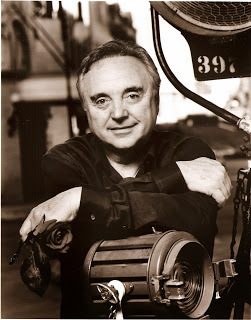 Warren Adler is best known for The War of the Roses, his masterpiece fictionalization of a macabre divorce turned into the Golden Globe and BAFTA nominated dark comedy hit starring Michael Douglas, Kathleen Turner and Danny DeVito. Adler's international hit stage adaptation of the novel will premiere on Broadway in 2015-2016. Adler has also optioned and sold film rights for a number of his works including Random Hearts (starring Harrison Ford and Kristen Scott Thomas) and The Sunset Gang (produced by Linda Lavin for PBS' American Playhouse series starring Jerry Stiller, Uta Hagen, Harold Gould and Doris Roberts). In recent development are the Broadway Production of The War of the Roses, to be produced by Jay and Cindy Gutterman, The War of the Roses - The Children (Grey Eagle Films and Permut Presentations), a feature film adaptation of the sequel to Adler's iconic divorce story, Target Churchill (Grey Eagle Films and Solution Entertainment),Mourning Glory, to be adapted by Karen Leigh Hopkins, and Capitol Crimes (Grey Eagle Films and Sennet Entertainment), a television series based on his Fiona Fitzgerald mystery series. Warren Adler's newest thriller, Treadmill, is officially available.
Warren Adler is best known for The War of the Roses, his masterpiece fictionalization of a macabre divorce turned into the Golden Globe and BAFTA nominated dark comedy hit starring Michael Douglas, Kathleen Turner and Danny DeVito. Adler's international hit stage adaptation of the novel will premiere on Broadway in 2015-2016. Adler has also optioned and sold film rights for a number of his works including Random Hearts (starring Harrison Ford and Kristen Scott Thomas) and The Sunset Gang (produced by Linda Lavin for PBS' American Playhouse series starring Jerry Stiller, Uta Hagen, Harold Gould and Doris Roberts). In recent development are the Broadway Production of The War of the Roses, to be produced by Jay and Cindy Gutterman, The War of the Roses - The Children (Grey Eagle Films and Permut Presentations), a feature film adaptation of the sequel to Adler's iconic divorce story, Target Churchill (Grey Eagle Films and Solution Entertainment),Mourning Glory, to be adapted by Karen Leigh Hopkins, and Capitol Crimes (Grey Eagle Films and Sennet Entertainment), a television series based on his Fiona Fitzgerald mystery series. Warren Adler's newest thriller, Treadmill, is officially available.
 There is a long list of writers
There is a long list of writerswho have committed suicide.Looking at the long list of writers who have committed suicide, one is tempted to associate the so-called artistic temperament, the agony of creative achievement, with the primary motivation for that final act.
The list is long and includes many well-known literary figures like Earnest Hemingway, Richard Brautigan, Louis Adamic, Romain Gary, Sylvia Plath, Arthur Koestler, Primo Levi, Ross Lockridge Jr., John Kennedy Toole, David Foster Wallace, Virginia Woolf, Jack London Stefan Zweig, Raymond Chandler and Hunter Thompson among others.
Those who tend to associate the internal struggles of the creative life with suicide often concoct reasons based on romantic, legendary assumptions that making art requires a private agony based on a God-given talent that forces its possessor to see and feel more than ordinary mortals.
The myth contends that because the artist is blessed with such extraordinary insight, he or she can see into deeper truths where there is only futility, darkness, disillusion and death. It is all part of the tortured artist stereotype.
 The gift of talent is mysterious.I'm not entirely sold. Granted, the gift of talent is mysterious and for lack of better definitions, God-given or gene-driven. Its development and flowering requires grueling work, deep discipline and ferocious dedication.
The gift of talent is mysterious.I'm not entirely sold. Granted, the gift of talent is mysterious and for lack of better definitions, God-given or gene-driven. Its development and flowering requires grueling work, deep discipline and ferocious dedication. Writers of fiction, of which I am a practitioner, spend a lot of time creating parallel worlds in which characters interact and pursue experiences that are activated within the mind. These worlds are based on the writer's own experiences, hearsay and an amalgamation of memories, observations and ideas scrambling around in the imagination, all willfully whipped into order in a story format that seeks to find truth out of this muddle.
It is hard to convey the difficulties required to create fiction whether in the form of a novel, play or short story. It requires long hours of deep thinking and is a time-consuming and lonely effort of physical and mental labor to write and rewrite, ponder and argue with one's muse on how best to render a story. It is, indeed, a profound exercise difficult to explain as a process except to like-minded people engaged in such a pursuit.
It's easy to attribute a breakdown or a wish to escape from such a difficult and mysterious process. There have been many false romantic notions created by those who do not share these singular human talents. Some might conclude that one motive for suicide might be that the well has run dry, and the writer has reached the end of some mythical creative journey that has taken them to the edge of an equally mythical cliff, leaving the sole option of jumping into oblivion.
 Sometimes the creative well runs dry.This so called "well run dry" theory has a long history and offers a satisfying explanation. It can't be rejected completely. For writers and all artists, the creative impulse is the oxygen that sustains them, and the possibilities of its perceived loss is consequential and could very well spark end of life thoughts.
Sometimes the creative well runs dry.This so called "well run dry" theory has a long history and offers a satisfying explanation. It can't be rejected completely. For writers and all artists, the creative impulse is the oxygen that sustains them, and the possibilities of its perceived loss is consequential and could very well spark end of life thoughts.Then there is the theory of the failed writer, those who believe in their talent and creations, yet are repeatedly rejected and, out of frustration and failure, take their own life. John Kennedy Toole seems to be an example of that category. His literary recognition came after his suicide by his mother's efforts to get his work published.
Perceived failure has long been a motive for suicide. But doesn't that apply to anyonewho is unable to cope with unfulfilled dreams? Strangely, there is the case of Ross Lockridge, Jr. who authored the well-received novel Raintree County. Favorably compared to Gone With the Wind, it was made into a movie with the two reigning stars of the day, Elizabeth Taylor and Montgomery Clift. Any creative writer would consider this a home run. Not Mr. Lockridge. He shot himself on the eve of the movie's release after the novel's long run on the New York Times bestseller list.
But there are many wonderfully creative and successful writers, Shakespeare may be a pinnacle example, who seem to have decided to pack it in for other reasons. As they say, using the poker analogy, there is a time to hold and a time to fold.
The list of famous writers who chose the path of continuation of their creative efforts or simple retirement is far longer than those writers who snuffed out their lives through suicide, and many have engaged in a large spectrum of occupations and endeavors.
 The creative life offers both agony and ecstasy.My own view is that the creative life offers both agony and ecstasy. Whether one is a writer, painter, composer or any other occupation where the gift of imaginary invention is required, one should accept their talent as a cause for celebration. The lucky possessor who discovers its power should accept the gift as long as it lasts. Sometimes it lasts a lifetime. Sometimes it flowers and wilts. As the poet Robert Herrick opines.
The creative life offers both agony and ecstasy.My own view is that the creative life offers both agony and ecstasy. Whether one is a writer, painter, composer or any other occupation where the gift of imaginary invention is required, one should accept their talent as a cause for celebration. The lucky possessor who discovers its power should accept the gift as long as it lasts. Sometimes it lasts a lifetime. Sometimes it flowers and wilts. As the poet Robert Herrick opines.Gather ye rosebuds while ye may,
Old Time is still a-flying;
And this same flower that smiles today,
Tomorrow will be dying.
The underlying causes of suicide are complex and numerous. It is a human fault line and is not exclusive to artists.
What is your opinion? Does the creative life of a writer bring with it added stress and susceptibility? Be sure to leave your thoughts in the comments section below.
TWEETABLE
Does the writer's life bring added stress & susceptibility to suicide? @WarrenAdler on @EdieMelson (Click to Tweet)
The Myth of the Suicidal Writer - via @WarrenAdler on @EdieMelson (Click to Tweet)
 Warren Adler is best known for The War of the Roses, his masterpiece fictionalization of a macabre divorce turned into the Golden Globe and BAFTA nominated dark comedy hit starring Michael Douglas, Kathleen Turner and Danny DeVito. Adler's international hit stage adaptation of the novel will premiere on Broadway in 2015-2016. Adler has also optioned and sold film rights for a number of his works including Random Hearts (starring Harrison Ford and Kristen Scott Thomas) and The Sunset Gang (produced by Linda Lavin for PBS' American Playhouse series starring Jerry Stiller, Uta Hagen, Harold Gould and Doris Roberts). In recent development are the Broadway Production of The War of the Roses, to be produced by Jay and Cindy Gutterman, The War of the Roses - The Children (Grey Eagle Films and Permut Presentations), a feature film adaptation of the sequel to Adler's iconic divorce story, Target Churchill (Grey Eagle Films and Solution Entertainment),Mourning Glory, to be adapted by Karen Leigh Hopkins, and Capitol Crimes (Grey Eagle Films and Sennet Entertainment), a television series based on his Fiona Fitzgerald mystery series. Warren Adler's newest thriller, Treadmill, is officially available.
Warren Adler is best known for The War of the Roses, his masterpiece fictionalization of a macabre divorce turned into the Golden Globe and BAFTA nominated dark comedy hit starring Michael Douglas, Kathleen Turner and Danny DeVito. Adler's international hit stage adaptation of the novel will premiere on Broadway in 2015-2016. Adler has also optioned and sold film rights for a number of his works including Random Hearts (starring Harrison Ford and Kristen Scott Thomas) and The Sunset Gang (produced by Linda Lavin for PBS' American Playhouse series starring Jerry Stiller, Uta Hagen, Harold Gould and Doris Roberts). In recent development are the Broadway Production of The War of the Roses, to be produced by Jay and Cindy Gutterman, The War of the Roses - The Children (Grey Eagle Films and Permut Presentations), a feature film adaptation of the sequel to Adler's iconic divorce story, Target Churchill (Grey Eagle Films and Solution Entertainment),Mourning Glory, to be adapted by Karen Leigh Hopkins, and Capitol Crimes (Grey Eagle Films and Sennet Entertainment), a television series based on his Fiona Fitzgerald mystery series. Warren Adler's newest thriller, Treadmill, is officially available.
Published on May 14, 2015 01:00
May 13, 2015
Writing Through the Pain
By Andrea Merrell @AndreaMerrell
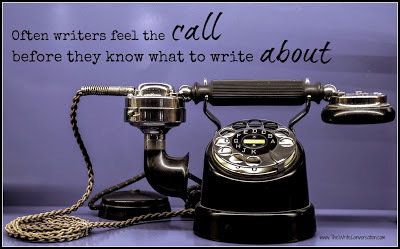 Many people feel called to write, but don’t know what to write about. This is especially true for new writers. Even seasoned authors look for inspiration wherever they can find it, but sometimes they miss one of the most valuable resources available . . . pain.
Many people feel called to write, but don’t know what to write about. This is especially true for new writers. Even seasoned authors look for inspiration wherever they can find it, but sometimes they miss one of the most valuable resources available . . . pain.
Why in the world would we want to write about pain? Because it’s a fact of life. It’s something everyone goes through, whether physical, mental, emotional, or relational. And it’s something everyone can not only relate to, but learn from—especially when we’re willing to be open, honest, and transparent with what we’ve experienced.Think for a moment about what you’ve been through that might help, inspire, and encourage someone else? What have you faced and conquered that will bring victory into the lives of your readers? There are blogs/books/articles/stories/devotions about everything from dealing with a strong-willed child to coping with the crisis of divorce or even death. Maybe you’re caring for an elderly parent. Perhaps you’ve struggled with weight loss, chronic illness, or addiction. Sometimes our passion is either born or fueled by our pain and when we can channel that passion into our writing, we have the ability to touch a hurting soul and give them hope.
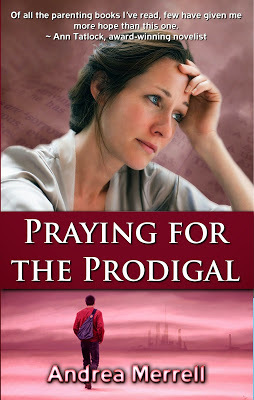 In my new book, Prayingfor the Prodigal, I share the agony of dealing with rebellious and ungodly behavior from both of my children for over five years. This was one of the most painful times in my life. Fear gripped my heart as I battled anger, frustration, guilt, and even depression. Many have asked if it was difficult to write this story, and my answer is absolutely yes. As I sorted through the details, I re-lived many of the events that brought endless tears, sleepless nights, and the hopelessness that tried to swallow me.
In my new book, Prayingfor the Prodigal, I share the agony of dealing with rebellious and ungodly behavior from both of my children for over five years. This was one of the most painful times in my life. Fear gripped my heart as I battled anger, frustration, guilt, and even depression. Many have asked if it was difficult to write this story, and my answer is absolutely yes. As I sorted through the details, I re-lived many of the events that brought endless tears, sleepless nights, and the hopelessness that tried to swallow me.
The best part, however, was the mental and emotional healing that took place as I wrote. I was able to view the events from a different perspective and to share the numerous lessons God taught me along the way, including how to stand firmly on His Word and pray for my children daily. Through this traumatic time, I learned that God is faithful, His Word is truth, and not to ever give up when praying in faith according to His will. My sincere prayer is for this book to give encouragement and practical advice to those who are traveling the same dark path, and to let them know there is always hope for the prodigal.
The bottom line is this: In God’s economy, nothing is wasted . . . even our pain. What the enemy means for evil and destruction, God can turn around for our good and His glory—and the edification of the body of Christ.
Don’t be afraid to dig deep and give your words to God. Your story may be someone’s lifeline and a direct answer to an urgent prayer.
TWEETABLESDon't be afraid of #writing through the pain - wisdom from author @AndreaMerrell on @EdieMelson (Click to Tweet)
"In God's economy, nothing is wasted, not even our pain." - #Writing thru the Pain - @AndreaMerrell (Click to Tweet)
 Andrea Merrell is Associate Editor for Christian Devotions Ministries and Lighthouse Publishing of the Carolinas. She is also a freelance editor and has been published in numerous anthologies and online venues. Andrea is the author of Murder of a Manuscript. The Gift, and Praying for the Prodigal. For more information visit www.AndreaMerrell.com or www.TheWriteEditing.com.
Andrea Merrell is Associate Editor for Christian Devotions Ministries and Lighthouse Publishing of the Carolinas. She is also a freelance editor and has been published in numerous anthologies and online venues. Andrea is the author of Murder of a Manuscript. The Gift, and Praying for the Prodigal. For more information visit www.AndreaMerrell.com or www.TheWriteEditing.com.
 Many people feel called to write, but don’t know what to write about. This is especially true for new writers. Even seasoned authors look for inspiration wherever they can find it, but sometimes they miss one of the most valuable resources available . . . pain.
Many people feel called to write, but don’t know what to write about. This is especially true for new writers. Even seasoned authors look for inspiration wherever they can find it, but sometimes they miss one of the most valuable resources available . . . pain. Why in the world would we want to write about pain? Because it’s a fact of life. It’s something everyone goes through, whether physical, mental, emotional, or relational. And it’s something everyone can not only relate to, but learn from—especially when we’re willing to be open, honest, and transparent with what we’ve experienced.Think for a moment about what you’ve been through that might help, inspire, and encourage someone else? What have you faced and conquered that will bring victory into the lives of your readers? There are blogs/books/articles/stories/devotions about everything from dealing with a strong-willed child to coping with the crisis of divorce or even death. Maybe you’re caring for an elderly parent. Perhaps you’ve struggled with weight loss, chronic illness, or addiction. Sometimes our passion is either born or fueled by our pain and when we can channel that passion into our writing, we have the ability to touch a hurting soul and give them hope.
 In my new book, Prayingfor the Prodigal, I share the agony of dealing with rebellious and ungodly behavior from both of my children for over five years. This was one of the most painful times in my life. Fear gripped my heart as I battled anger, frustration, guilt, and even depression. Many have asked if it was difficult to write this story, and my answer is absolutely yes. As I sorted through the details, I re-lived many of the events that brought endless tears, sleepless nights, and the hopelessness that tried to swallow me.
In my new book, Prayingfor the Prodigal, I share the agony of dealing with rebellious and ungodly behavior from both of my children for over five years. This was one of the most painful times in my life. Fear gripped my heart as I battled anger, frustration, guilt, and even depression. Many have asked if it was difficult to write this story, and my answer is absolutely yes. As I sorted through the details, I re-lived many of the events that brought endless tears, sleepless nights, and the hopelessness that tried to swallow me. The best part, however, was the mental and emotional healing that took place as I wrote. I was able to view the events from a different perspective and to share the numerous lessons God taught me along the way, including how to stand firmly on His Word and pray for my children daily. Through this traumatic time, I learned that God is faithful, His Word is truth, and not to ever give up when praying in faith according to His will. My sincere prayer is for this book to give encouragement and practical advice to those who are traveling the same dark path, and to let them know there is always hope for the prodigal.
The bottom line is this: In God’s economy, nothing is wasted . . . even our pain. What the enemy means for evil and destruction, God can turn around for our good and His glory—and the edification of the body of Christ.
Don’t be afraid to dig deep and give your words to God. Your story may be someone’s lifeline and a direct answer to an urgent prayer.
TWEETABLESDon't be afraid of #writing through the pain - wisdom from author @AndreaMerrell on @EdieMelson (Click to Tweet)
"In God's economy, nothing is wasted, not even our pain." - #Writing thru the Pain - @AndreaMerrell (Click to Tweet)
 Andrea Merrell is Associate Editor for Christian Devotions Ministries and Lighthouse Publishing of the Carolinas. She is also a freelance editor and has been published in numerous anthologies and online venues. Andrea is the author of Murder of a Manuscript. The Gift, and Praying for the Prodigal. For more information visit www.AndreaMerrell.com or www.TheWriteEditing.com.
Andrea Merrell is Associate Editor for Christian Devotions Ministries and Lighthouse Publishing of the Carolinas. She is also a freelance editor and has been published in numerous anthologies and online venues. Andrea is the author of Murder of a Manuscript. The Gift, and Praying for the Prodigal. For more information visit www.AndreaMerrell.com or www.TheWriteEditing.com.
Published on May 13, 2015 01:00
May 12, 2015
I Kid You Not—The Truth about Writing for Children
by Cindy Sproles @CindyDevoted
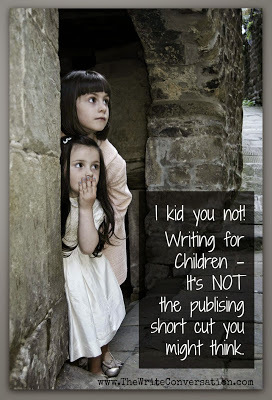 When new writers enter the world of publishing, the genre they lean toward is children. I’ve often wondered why until I realized it’s a mindset – and a wrong mindset at that.
When new writers enter the world of publishing, the genre they lean toward is children. I’ve often wondered why until I realized it’s a mindset – and a wrong mindset at that.
I began to ask new writers the question, “Why this genre? Why children’s?” Eighty percent of the time, I got a deer in the headlights look; the remaining twenty percent responded they thought writing for children was easy and short.
There is some element of truth to that – children’s stories are short. The reminding mindset is just wrong. Writing for children is not as easy as it sounds. As writers, we assume children are so low on the learning scale that we can write anything and it will qualify.
Writing for children requires skill. Though the word count is less, never underestimate the intelligence of a child. They are sharp and very quick to be insulted when writers “dumb down” stories or articles. It’s important to understand there is a huge difference in dumbing down and writing on an elementary or pre-school level. When you write on these levels, choose age appropriate language and words. Sentences are written in a simple form using clear and concise nouns and verbs. Nothing will bore a child faster than writing, for lack of better words, that insults their intelligence. Children are no different from adults when it comes to losing interest when explanations seem forced, condescending, or overdone.
The skill in writing for children comes when you master the elements necessary to build a successful story: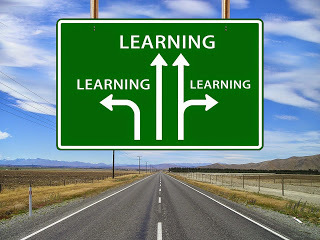 Have solid theme and let it build throughout the story. Stay away from rabbit trails. Focus on the point of the story and drive it ahead.Keep it upbeat. No “Debby Downer” stories for little ones. Even when writing about the loss of a grandparent or a pet, the story must maintain a positive slant that allows a child to learn the steps of grieving.The plot must have conflict (Sounds like a novel, heh? Somethings are true regardless of the age).The main character must have a problem that he/she must resolve. It should have hardship, failure, help, and success. (Remember keep it simple– picture books can only have one conflict.)Keep the story in chronological order. Just as in adult stories, begin with action to draw your reader into the fiction bubble. Children love action and they will often role play a story they love. Give them action.Limit scenes and make them concise.Choose your point of view – Third person is recommended so younger readers are not confused.Flesh out your characters. Make them identifiable and easy to relate to for the reader. Now is not the time for overly complex characters. Choose a character trait and let that shine through on your characters. Children relate to mannerisms, unique phrases, or physical traits.Choose an interesting setting and time. Little girls are probably not going to love cattle roping just like little boys will steer clear of tea parties.Write simple and direct sentences (keep sentences, words, and paragraphs short).Show don’t tell. Please SHOW don’t TELL. Avoid lots of unnecessary narration.Dialogue is great. Kids relate to dialogue. Let your characters converse. Good conversation teaches children how to communicate as they grow older.Finally, a reminder to be age appropriate. Don’t try to be overly sentimental. Make your stories fun and avoid heavy subject matter.
Have solid theme and let it build throughout the story. Stay away from rabbit trails. Focus on the point of the story and drive it ahead.Keep it upbeat. No “Debby Downer” stories for little ones. Even when writing about the loss of a grandparent or a pet, the story must maintain a positive slant that allows a child to learn the steps of grieving.The plot must have conflict (Sounds like a novel, heh? Somethings are true regardless of the age).The main character must have a problem that he/she must resolve. It should have hardship, failure, help, and success. (Remember keep it simple– picture books can only have one conflict.)Keep the story in chronological order. Just as in adult stories, begin with action to draw your reader into the fiction bubble. Children love action and they will often role play a story they love. Give them action.Limit scenes and make them concise.Choose your point of view – Third person is recommended so younger readers are not confused.Flesh out your characters. Make them identifiable and easy to relate to for the reader. Now is not the time for overly complex characters. Choose a character trait and let that shine through on your characters. Children relate to mannerisms, unique phrases, or physical traits.Choose an interesting setting and time. Little girls are probably not going to love cattle roping just like little boys will steer clear of tea parties.Write simple and direct sentences (keep sentences, words, and paragraphs short).Show don’t tell. Please SHOW don’t TELL. Avoid lots of unnecessary narration.Dialogue is great. Kids relate to dialogue. Let your characters converse. Good conversation teaches children how to communicate as they grow older.Finally, a reminder to be age appropriate. Don’t try to be overly sentimental. Make your stories fun and avoid heavy subject matter.
The challenge in writing for children comes in teaching children the love of reading. As writers, we cannot teach them the lessons of life unless they love to read. Your assignment, should you chose to accept it: Write so they will develop a love for reading.
TWEETABLESI kid you not - the truth about #Writing for children - via @CindyDevoted on @EdieMelson (Click to Tweet)
#Writing for children isn't choosing the publishing short cut you may think - via @CindyDevoted (Click to Tweet)
 Cindy Sproles is an author and popular speaker. She is the cofounder of Christian Devotions ministries and managing editor of Straight Street Books and SonRise Devotionals, imprints of Lighthouse Publishing of the Carolinas. Cindy is the executive editor of
Cindy Sproles is an author and popular speaker. She is the cofounder of Christian Devotions ministries and managing editor of Straight Street Books and SonRise Devotionals, imprints of Lighthouse Publishing of the Carolinas. Cindy is the executive editor of
www.christiandevotions.us and www.inspireafire.com. She teaches at writers conferences nationwide and directs The Asheville Christian Writers Conference - Writers Boot Camp.
She is the author of two devotionals, He Said, She Said - Learning to Live aLife of Passion and New Sheets - Thirty Days to Refine You into theWoman You Can Be. Cindy's debut fiction novel, Mercy's Rain, is available at major retailers. Visit Cindy at www.cindysproles.com and book her for your next conference or ladies retreat. Also connect with her on Facebook and Twitter.
 When new writers enter the world of publishing, the genre they lean toward is children. I’ve often wondered why until I realized it’s a mindset – and a wrong mindset at that.
When new writers enter the world of publishing, the genre they lean toward is children. I’ve often wondered why until I realized it’s a mindset – and a wrong mindset at that.I began to ask new writers the question, “Why this genre? Why children’s?” Eighty percent of the time, I got a deer in the headlights look; the remaining twenty percent responded they thought writing for children was easy and short.
There is some element of truth to that – children’s stories are short. The reminding mindset is just wrong. Writing for children is not as easy as it sounds. As writers, we assume children are so low on the learning scale that we can write anything and it will qualify.
Writing for children requires skill. Though the word count is less, never underestimate the intelligence of a child. They are sharp and very quick to be insulted when writers “dumb down” stories or articles. It’s important to understand there is a huge difference in dumbing down and writing on an elementary or pre-school level. When you write on these levels, choose age appropriate language and words. Sentences are written in a simple form using clear and concise nouns and verbs. Nothing will bore a child faster than writing, for lack of better words, that insults their intelligence. Children are no different from adults when it comes to losing interest when explanations seem forced, condescending, or overdone.
The skill in writing for children comes when you master the elements necessary to build a successful story:
 Have solid theme and let it build throughout the story. Stay away from rabbit trails. Focus on the point of the story and drive it ahead.Keep it upbeat. No “Debby Downer” stories for little ones. Even when writing about the loss of a grandparent or a pet, the story must maintain a positive slant that allows a child to learn the steps of grieving.The plot must have conflict (Sounds like a novel, heh? Somethings are true regardless of the age).The main character must have a problem that he/she must resolve. It should have hardship, failure, help, and success. (Remember keep it simple– picture books can only have one conflict.)Keep the story in chronological order. Just as in adult stories, begin with action to draw your reader into the fiction bubble. Children love action and they will often role play a story they love. Give them action.Limit scenes and make them concise.Choose your point of view – Third person is recommended so younger readers are not confused.Flesh out your characters. Make them identifiable and easy to relate to for the reader. Now is not the time for overly complex characters. Choose a character trait and let that shine through on your characters. Children relate to mannerisms, unique phrases, or physical traits.Choose an interesting setting and time. Little girls are probably not going to love cattle roping just like little boys will steer clear of tea parties.Write simple and direct sentences (keep sentences, words, and paragraphs short).Show don’t tell. Please SHOW don’t TELL. Avoid lots of unnecessary narration.Dialogue is great. Kids relate to dialogue. Let your characters converse. Good conversation teaches children how to communicate as they grow older.Finally, a reminder to be age appropriate. Don’t try to be overly sentimental. Make your stories fun and avoid heavy subject matter.
Have solid theme and let it build throughout the story. Stay away from rabbit trails. Focus on the point of the story and drive it ahead.Keep it upbeat. No “Debby Downer” stories for little ones. Even when writing about the loss of a grandparent or a pet, the story must maintain a positive slant that allows a child to learn the steps of grieving.The plot must have conflict (Sounds like a novel, heh? Somethings are true regardless of the age).The main character must have a problem that he/she must resolve. It should have hardship, failure, help, and success. (Remember keep it simple– picture books can only have one conflict.)Keep the story in chronological order. Just as in adult stories, begin with action to draw your reader into the fiction bubble. Children love action and they will often role play a story they love. Give them action.Limit scenes and make them concise.Choose your point of view – Third person is recommended so younger readers are not confused.Flesh out your characters. Make them identifiable and easy to relate to for the reader. Now is not the time for overly complex characters. Choose a character trait and let that shine through on your characters. Children relate to mannerisms, unique phrases, or physical traits.Choose an interesting setting and time. Little girls are probably not going to love cattle roping just like little boys will steer clear of tea parties.Write simple and direct sentences (keep sentences, words, and paragraphs short).Show don’t tell. Please SHOW don’t TELL. Avoid lots of unnecessary narration.Dialogue is great. Kids relate to dialogue. Let your characters converse. Good conversation teaches children how to communicate as they grow older.Finally, a reminder to be age appropriate. Don’t try to be overly sentimental. Make your stories fun and avoid heavy subject matter.The challenge in writing for children comes in teaching children the love of reading. As writers, we cannot teach them the lessons of life unless they love to read. Your assignment, should you chose to accept it: Write so they will develop a love for reading.
TWEETABLESI kid you not - the truth about #Writing for children - via @CindyDevoted on @EdieMelson (Click to Tweet)
#Writing for children isn't choosing the publishing short cut you may think - via @CindyDevoted (Click to Tweet)
 Cindy Sproles is an author and popular speaker. She is the cofounder of Christian Devotions ministries and managing editor of Straight Street Books and SonRise Devotionals, imprints of Lighthouse Publishing of the Carolinas. Cindy is the executive editor of
Cindy Sproles is an author and popular speaker. She is the cofounder of Christian Devotions ministries and managing editor of Straight Street Books and SonRise Devotionals, imprints of Lighthouse Publishing of the Carolinas. Cindy is the executive editor ofwww.christiandevotions.us and www.inspireafire.com. She teaches at writers conferences nationwide and directs The Asheville Christian Writers Conference - Writers Boot Camp.
She is the author of two devotionals, He Said, She Said - Learning to Live aLife of Passion and New Sheets - Thirty Days to Refine You into theWoman You Can Be. Cindy's debut fiction novel, Mercy's Rain, is available at major retailers. Visit Cindy at www.cindysproles.com and book her for your next conference or ladies retreat. Also connect with her on Facebook and Twitter.
Published on May 12, 2015 01:00
May 11, 2015
Size Your Social Media Image Correctly for More Shares
by Edie Melson @EdieMelson
 There's not a lot as frustrating as trying to look at an image on Facebook that's the wrong size. By the time I blow it up big enough to see it, it's too blurry. Here are some exact dimensions to help you avoid that trap, and not just for Facebook.
There's not a lot as frustrating as trying to look at an image on Facebook that's the wrong size. By the time I blow it up big enough to see it, it's too blurry. Here are some exact dimensions to help you avoid that trap, and not just for Facebook.
This is the third time I've posted information on Social Media Images, but this isn't just repeated information. Social media is in a constant state of flux, and that pertains to the size and type of images that work best on each network.
So this is my UPDATED Social Media Image Cheat SheetThis list will give you the specific information you need to upload photos to various social media sites. TwitterProfile Photo:
Pixels: 81 x 81
Maximum file size: 700k
File Type(s): jpeg, png, gif
Header Image:
Pixels: 520 x 260
Maximum file size: not listed
File Type(s): jpeg, png, gif
Custom Background:
Pixels: 1600 x 1200
Maximum file size: not listed
File Type(s): jpeg, png, gif
TwitterProfile Photo:
Pixels: 81 x 81
Maximum file size: 700k
File Type(s): jpeg, png, gif
Header Image:
Pixels: 520 x 260
Maximum file size: not listed
File Type(s): jpeg, png, gif
Custom Background:
Pixels: 1600 x 1200
Maximum file size: not listed
File Type(s): jpeg, png, gif
Stream Photo: optimum is 504 x 253 pixels, but can be up to 1024 x 512 pixels because Twitter will resize the image
Facebook Cover Photo: Pixels: 851 x 315 Maximum file size: not listed File type(s): jpeg, png, gif Profile Photo: Pixels: 180 x 180 (will size down to 160 x 160) Maximum file size: 5mb File type(s): jpeg, png, gif
Newsfeed Photos: to fit within 470 x 394 pixel boxes. Facebook recommends uploading images with widths of 720, 960, or 2048 for optimal quality because they will be resized automatically for fit within the feed.File type(s): jpeg, png, gif
Video: Maximum file size: 1024mb Maximum length: 20 minutes Optimum file type: mp4
 Google+ Cover Photo: Pixels: 2120 x 1192Maximum file size: not listedFile type(s): jpeg, png, gif
Google+ Cover Photo: Pixels: 2120 x 1192Maximum file size: not listedFile type(s): jpeg, png, gif
Profile Photo (also the photo for Blogger account):Pixels: 250 x 250Maximum file size: not listedFile type(s): jpeg, png, gif
Newsfeed Images: The wideth of the columns varies greatly, but images should be a midinmum of 350 pixels wide.Maximum size: 2048 x 2048 pixels
PinterestProfile Photo:Pixels: 165 x 165Maximum file size: Pinterest recommends you upload photos with square dimensions that measure 600 x 600 pixelsFile type(s): jpeg, png, gif
Pins:Pixels: 238 wide, Pinterest will adjust the height automaticallyThe pins are 735 pixels wide when expanded.Maximum file size: not listedFile type(s): jpeg, png, gif
Cover Image:Pixels: 217 x 147Pixels: 51x 51 (this is they tiny thumbnail found below the cover imageMaximum file size: not listedFile type(s): jpeg, png, gif
InstagramImage size: maximum 2048 x 2048 pixels.
 LinkedInProfile Photo:Pixels: 200 x 200, not to exceed 500 x 500Maximum file size: 4mbFile type(s): jpeg, png, gif
LinkedInProfile Photo:Pixels: 200 x 200, not to exceed 500 x 500Maximum file size: 4mbFile type(s): jpeg, png, gif
Horizontal Logo:Pixels: 100 x 60Maximum file size: not listedFile type(s): jpeg, png, gif
Cover Photo:Pixels: 646 x 220Maximum file size: not listedFile type(s): jpeg, png, gif
YouTubeCover Art:Pixels: Depends on where it’s being viewed from:
Desktop: 2560 x 423
Tablet: 1855 x 423
Mobile: 1546 x 423For best results everywhere, size to mobile!
Maximum file size: not listedFile type(s): jpeg, png, gif
If you have a question about posting images to social media, but sure to leave it in the comments section below.
Don't forget to join the conversation!Blessings,Edie
TWEETABLESMake sure your #SocialMedia image is the correct size for more shares - via @EdieMelson (Click to Tweet)
Notsure what size an image needs to be to fit a #socialmedia network? @EdieMelsonhas the answers! (Click to Tweet)
 There's not a lot as frustrating as trying to look at an image on Facebook that's the wrong size. By the time I blow it up big enough to see it, it's too blurry. Here are some exact dimensions to help you avoid that trap, and not just for Facebook.
There's not a lot as frustrating as trying to look at an image on Facebook that's the wrong size. By the time I blow it up big enough to see it, it's too blurry. Here are some exact dimensions to help you avoid that trap, and not just for Facebook.This is the third time I've posted information on Social Media Images, but this isn't just repeated information. Social media is in a constant state of flux, and that pertains to the size and type of images that work best on each network.
So this is my UPDATED Social Media Image Cheat SheetThis list will give you the specific information you need to upload photos to various social media sites.
 TwitterProfile Photo:
Pixels: 81 x 81
Maximum file size: 700k
File Type(s): jpeg, png, gif
Header Image:
Pixels: 520 x 260
Maximum file size: not listed
File Type(s): jpeg, png, gif
Custom Background:
Pixels: 1600 x 1200
Maximum file size: not listed
File Type(s): jpeg, png, gif
TwitterProfile Photo:
Pixels: 81 x 81
Maximum file size: 700k
File Type(s): jpeg, png, gif
Header Image:
Pixels: 520 x 260
Maximum file size: not listed
File Type(s): jpeg, png, gif
Custom Background:
Pixels: 1600 x 1200
Maximum file size: not listed
File Type(s): jpeg, png, gifStream Photo: optimum is 504 x 253 pixels, but can be up to 1024 x 512 pixels because Twitter will resize the image
Facebook Cover Photo: Pixels: 851 x 315 Maximum file size: not listed File type(s): jpeg, png, gif Profile Photo: Pixels: 180 x 180 (will size down to 160 x 160) Maximum file size: 5mb File type(s): jpeg, png, gif
Newsfeed Photos: to fit within 470 x 394 pixel boxes. Facebook recommends uploading images with widths of 720, 960, or 2048 for optimal quality because they will be resized automatically for fit within the feed.File type(s): jpeg, png, gif
Video: Maximum file size: 1024mb Maximum length: 20 minutes Optimum file type: mp4
 Google+ Cover Photo: Pixels: 2120 x 1192Maximum file size: not listedFile type(s): jpeg, png, gif
Google+ Cover Photo: Pixels: 2120 x 1192Maximum file size: not listedFile type(s): jpeg, png, gif
Profile Photo (also the photo for Blogger account):Pixels: 250 x 250Maximum file size: not listedFile type(s): jpeg, png, gif
Newsfeed Images: The wideth of the columns varies greatly, but images should be a midinmum of 350 pixels wide.Maximum size: 2048 x 2048 pixels
PinterestProfile Photo:Pixels: 165 x 165Maximum file size: Pinterest recommends you upload photos with square dimensions that measure 600 x 600 pixelsFile type(s): jpeg, png, gif
Pins:Pixels: 238 wide, Pinterest will adjust the height automaticallyThe pins are 735 pixels wide when expanded.Maximum file size: not listedFile type(s): jpeg, png, gif
Cover Image:Pixels: 217 x 147Pixels: 51x 51 (this is they tiny thumbnail found below the cover imageMaximum file size: not listedFile type(s): jpeg, png, gif
InstagramImage size: maximum 2048 x 2048 pixels.
 LinkedInProfile Photo:Pixels: 200 x 200, not to exceed 500 x 500Maximum file size: 4mbFile type(s): jpeg, png, gif
LinkedInProfile Photo:Pixels: 200 x 200, not to exceed 500 x 500Maximum file size: 4mbFile type(s): jpeg, png, gifHorizontal Logo:Pixels: 100 x 60Maximum file size: not listedFile type(s): jpeg, png, gif
Cover Photo:Pixels: 646 x 220Maximum file size: not listedFile type(s): jpeg, png, gif
YouTubeCover Art:Pixels: Depends on where it’s being viewed from:
Desktop: 2560 x 423
Tablet: 1855 x 423
Mobile: 1546 x 423For best results everywhere, size to mobile!
Maximum file size: not listedFile type(s): jpeg, png, gif
If you have a question about posting images to social media, but sure to leave it in the comments section below.
Don't forget to join the conversation!Blessings,Edie
TWEETABLESMake sure your #SocialMedia image is the correct size for more shares - via @EdieMelson (Click to Tweet)
Notsure what size an image needs to be to fit a #socialmedia network? @EdieMelsonhas the answers! (Click to Tweet)
Published on May 11, 2015 01:00
May 10, 2015
Mother’s Day Mayhem
by Sarah Van Diest
 Mother’s Day doesn’t necessarily mean everything goes Mother’s way. Last year’s special day was not what I signed up for.
Mother’s Day doesn’t necessarily mean everything goes Mother’s way. Last year’s special day was not what I signed up for.
The church service was over and the youth band was packing up. They had done a great job leading worship so I bee-lined my way to the front to congratulate them, especially Zach, the lead kid on the team.
I hopped up the stairs to the stage, but misjudged the final step. (Yep. Feel free to picture what was about to happen.) My right foot caught the lip of the stage and a forward fall commenced. In slow motion, or lightning speed, both are fitting, I crashed head first into the side of the black grand piano; the brunt of the impact landing on my right front teeth. My face turned sideways and my cheek suction-cupped itself to the black surface as I slipped down it.
Everything went black.
As my head began to clear and I realized where I was, I looked up to see what I had hit so violently. There, on the side wall of this beautiful grand, was my face print. Make-up was slapped in one spot and smeared down the side.
But there was something else.
 Embarrassed for having plastered my Mac cosmetics all over the clean, shiny black grand, and as a crowd gathered around me, I woozily and almost absent-mindedly wiped off the make-up with my sleeve. But I couldn’t get it all just right. In the process of hitting the piano and falling downward, my tooth had dug out both paint and wood leaving a tooth-shaped, bright white gash on the solid black piano, and all my sleeve-wiping couldn’t make it go away.
Embarrassed for having plastered my Mac cosmetics all over the clean, shiny black grand, and as a crowd gathered around me, I woozily and almost absent-mindedly wiped off the make-up with my sleeve. But I couldn’t get it all just right. In the process of hitting the piano and falling downward, my tooth had dug out both paint and wood leaving a tooth-shaped, bright white gash on the solid black piano, and all my sleeve-wiping couldn’t make it go away.
I felt my face for broken or missing teeth...all was well.
Sweet Zach, though still blurry, gave me his full attention and aid. As the rest of the church stared at me trying to figure out if I was injured or just moved by the Spirit, I laughed and told him that all I wanted was to tell him he did a great job.
He helped me stand and walked me down the steps, looked at me with a huge smile and said, "Happy Mother's Day!"
The following moments were spent taking pictures of both me and the piano, recapping for those unlucky enough to have missed the incident, and trying to decide if I had a concussion or not.
One root canal later, I’m doing much better.
As painful, both physically and emotionally, as this was, the turmoil of such public embarrassment is good for me. It’s good for all of us if we take it in the right context. This is life. It’s messy. It’s clumsy. Sometimes it’s excruciatingly unpleasant and we can’t always have people see us the way we want them to see us, but painful moments don’t have to be defined solely by the pain they bring. There is more they offer.
 This particular incident offered me the opportunity to embrace the things that matter and leave slapped on the side of the piano the things that don’t. My pride, self-reliance and self-assurance, along with my Texas bred poise and grace: the book-balanced-on-my-head-as-I-glide-down-a-staircase-with-eyes-straight-forward sort of poise, could all be left there adhered to the piano. There wasn’t much use in trying to reattach them anyway; the truth had been revealed.
This particular incident offered me the opportunity to embrace the things that matter and leave slapped on the side of the piano the things that don’t. My pride, self-reliance and self-assurance, along with my Texas bred poise and grace: the book-balanced-on-my-head-as-I-glide-down-a-staircase-with-eyes-straight-forward sort of poise, could all be left there adhered to the piano. There wasn’t much use in trying to reattach them anyway; the truth had been revealed.
The temptation in moments like these is to run and hide, or shrink into nothingness so no one will see the reality about who you are. That’s the voice of shame, by the way. Shame makes us want to disappear. Shame reveals a belief we hold about ourselves and if we are paying attention, we will recognize the tenor of shame’s voice and it’s not our heavenly Father’s.
Kneeling on that stage, not in prayer but in literal weakness, I heard the voice of shame and the voice of love both speaking to me. The voice of shame mocked me, laughed at me and taunted me. It told me to be humiliated and cry; to give in to the feeling of despair that comes with the identity of the “unwanted.” Countering that nasally, puny voice, the sweet, tender voice of love came from all around as dear ones turned their faces toward me and stretched out their hands with compassion and concern. It rang out in my heart and reminded me that my faltering, fumbling feet do not have the authority to define who I am. In fact, only my heavenly Father does. He loves me and I am wanted.
My head was fuzzy, dizzy and foggy, and all things were hard to make out except those two voices. I had a choice to make.
The temptation to succumb to the lies of the enemy was strong. I’ve listened to that voice most of my life, but this time was different. I had been practicing the presence of the Father and I had been learning to discern His voice from the others that call out their version of truth. So when this moment came, I recognized His voice amid the noise. I chose my Father’s voice. Instead of wishing that day had never happened, I recall it with a sense of joy. It was a good Mother’s Day. It was a good any day. My weakness revealed the Father’s strength. The thing meant for harm became the thing that blessed.
On this day, Mother’s Day, whose voice will you listen to? If you are a mother, a father, a daughter, a son, whoever you are, this day is a good day to evaluate what voice you are heeding. Maybe there are some things that need to get slapped onto your proverbial piano so well they stick…and then leave them there. The voice that lies to you and declares you are “unwanted” should always be left there in the smear of things where it belongs. The voice that whispers “you are loved” is our Father’s. Listen.
“As for you, you meant evil against me, but God meant it for good….” Gen.
5:20
 Sarah has worked in Christian publishing since 2005 as both and editor and an agent.
Sarah has worked in Christian publishing since 2005 as both and editor and an agent.
Currently, she works with her husband, David, in their agency, the Van Diest Literary Agency. Writing is a growing passion for her as she hopes to bring hope to hurting hearts.
 Mother’s Day doesn’t necessarily mean everything goes Mother’s way. Last year’s special day was not what I signed up for.
Mother’s Day doesn’t necessarily mean everything goes Mother’s way. Last year’s special day was not what I signed up for. The church service was over and the youth band was packing up. They had done a great job leading worship so I bee-lined my way to the front to congratulate them, especially Zach, the lead kid on the team.
I hopped up the stairs to the stage, but misjudged the final step. (Yep. Feel free to picture what was about to happen.) My right foot caught the lip of the stage and a forward fall commenced. In slow motion, or lightning speed, both are fitting, I crashed head first into the side of the black grand piano; the brunt of the impact landing on my right front teeth. My face turned sideways and my cheek suction-cupped itself to the black surface as I slipped down it.
Everything went black.
As my head began to clear and I realized where I was, I looked up to see what I had hit so violently. There, on the side wall of this beautiful grand, was my face print. Make-up was slapped in one spot and smeared down the side.
But there was something else.
 Embarrassed for having plastered my Mac cosmetics all over the clean, shiny black grand, and as a crowd gathered around me, I woozily and almost absent-mindedly wiped off the make-up with my sleeve. But I couldn’t get it all just right. In the process of hitting the piano and falling downward, my tooth had dug out both paint and wood leaving a tooth-shaped, bright white gash on the solid black piano, and all my sleeve-wiping couldn’t make it go away.
Embarrassed for having plastered my Mac cosmetics all over the clean, shiny black grand, and as a crowd gathered around me, I woozily and almost absent-mindedly wiped off the make-up with my sleeve. But I couldn’t get it all just right. In the process of hitting the piano and falling downward, my tooth had dug out both paint and wood leaving a tooth-shaped, bright white gash on the solid black piano, and all my sleeve-wiping couldn’t make it go away.I felt my face for broken or missing teeth...all was well.
Sweet Zach, though still blurry, gave me his full attention and aid. As the rest of the church stared at me trying to figure out if I was injured or just moved by the Spirit, I laughed and told him that all I wanted was to tell him he did a great job.
He helped me stand and walked me down the steps, looked at me with a huge smile and said, "Happy Mother's Day!"
The following moments were spent taking pictures of both me and the piano, recapping for those unlucky enough to have missed the incident, and trying to decide if I had a concussion or not.
One root canal later, I’m doing much better.
As painful, both physically and emotionally, as this was, the turmoil of such public embarrassment is good for me. It’s good for all of us if we take it in the right context. This is life. It’s messy. It’s clumsy. Sometimes it’s excruciatingly unpleasant and we can’t always have people see us the way we want them to see us, but painful moments don’t have to be defined solely by the pain they bring. There is more they offer.
 This particular incident offered me the opportunity to embrace the things that matter and leave slapped on the side of the piano the things that don’t. My pride, self-reliance and self-assurance, along with my Texas bred poise and grace: the book-balanced-on-my-head-as-I-glide-down-a-staircase-with-eyes-straight-forward sort of poise, could all be left there adhered to the piano. There wasn’t much use in trying to reattach them anyway; the truth had been revealed.
This particular incident offered me the opportunity to embrace the things that matter and leave slapped on the side of the piano the things that don’t. My pride, self-reliance and self-assurance, along with my Texas bred poise and grace: the book-balanced-on-my-head-as-I-glide-down-a-staircase-with-eyes-straight-forward sort of poise, could all be left there adhered to the piano. There wasn’t much use in trying to reattach them anyway; the truth had been revealed. The temptation in moments like these is to run and hide, or shrink into nothingness so no one will see the reality about who you are. That’s the voice of shame, by the way. Shame makes us want to disappear. Shame reveals a belief we hold about ourselves and if we are paying attention, we will recognize the tenor of shame’s voice and it’s not our heavenly Father’s.
Kneeling on that stage, not in prayer but in literal weakness, I heard the voice of shame and the voice of love both speaking to me. The voice of shame mocked me, laughed at me and taunted me. It told me to be humiliated and cry; to give in to the feeling of despair that comes with the identity of the “unwanted.” Countering that nasally, puny voice, the sweet, tender voice of love came from all around as dear ones turned their faces toward me and stretched out their hands with compassion and concern. It rang out in my heart and reminded me that my faltering, fumbling feet do not have the authority to define who I am. In fact, only my heavenly Father does. He loves me and I am wanted.
My head was fuzzy, dizzy and foggy, and all things were hard to make out except those two voices. I had a choice to make.
The temptation to succumb to the lies of the enemy was strong. I’ve listened to that voice most of my life, but this time was different. I had been practicing the presence of the Father and I had been learning to discern His voice from the others that call out their version of truth. So when this moment came, I recognized His voice amid the noise. I chose my Father’s voice. Instead of wishing that day had never happened, I recall it with a sense of joy. It was a good Mother’s Day. It was a good any day. My weakness revealed the Father’s strength. The thing meant for harm became the thing that blessed.
On this day, Mother’s Day, whose voice will you listen to? If you are a mother, a father, a daughter, a son, whoever you are, this day is a good day to evaluate what voice you are heeding. Maybe there are some things that need to get slapped onto your proverbial piano so well they stick…and then leave them there. The voice that lies to you and declares you are “unwanted” should always be left there in the smear of things where it belongs. The voice that whispers “you are loved” is our Father’s. Listen.
“As for you, you meant evil against me, but God meant it for good….” Gen.
5:20
 Sarah has worked in Christian publishing since 2005 as both and editor and an agent.
Sarah has worked in Christian publishing since 2005 as both and editor and an agent. Currently, she works with her husband, David, in their agency, the Van Diest Literary Agency. Writing is a growing passion for her as she hopes to bring hope to hurting hearts.
Published on May 10, 2015 01:00



